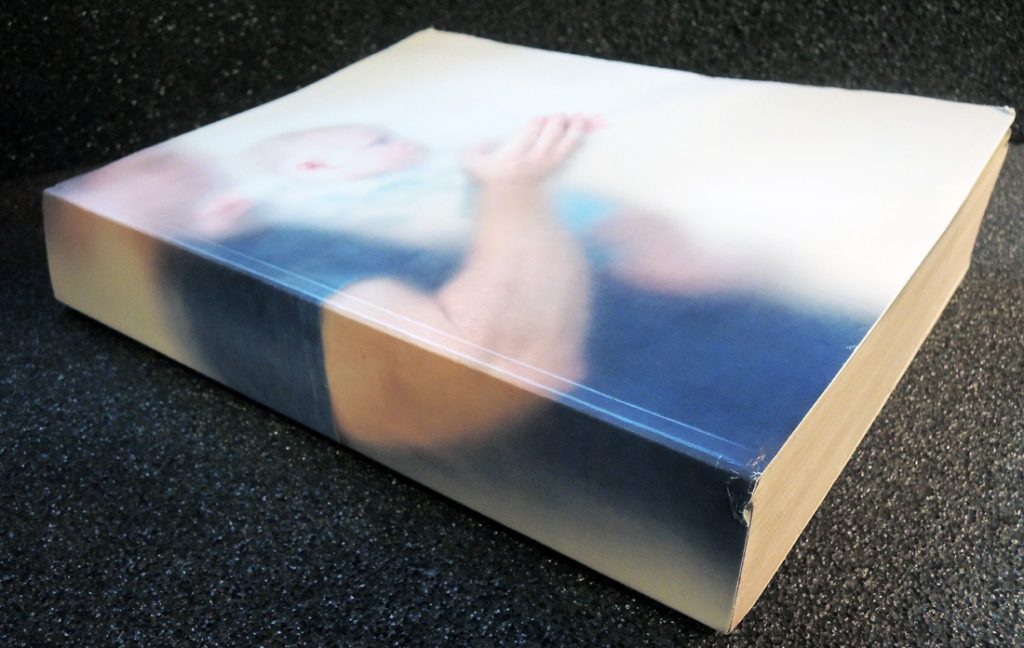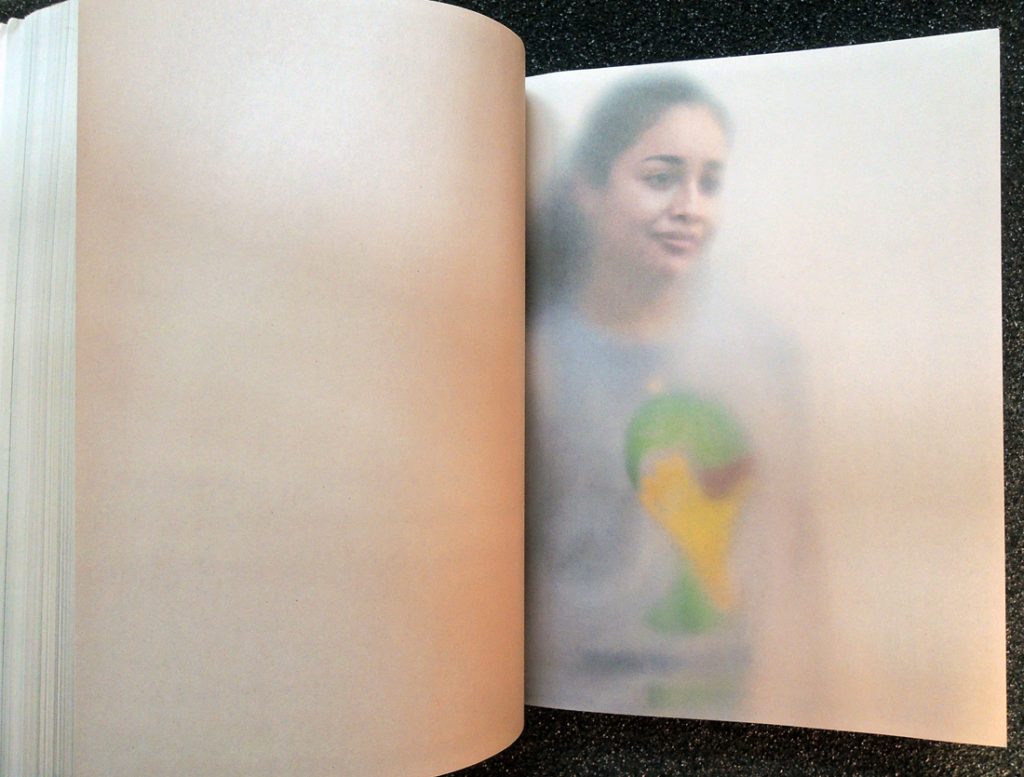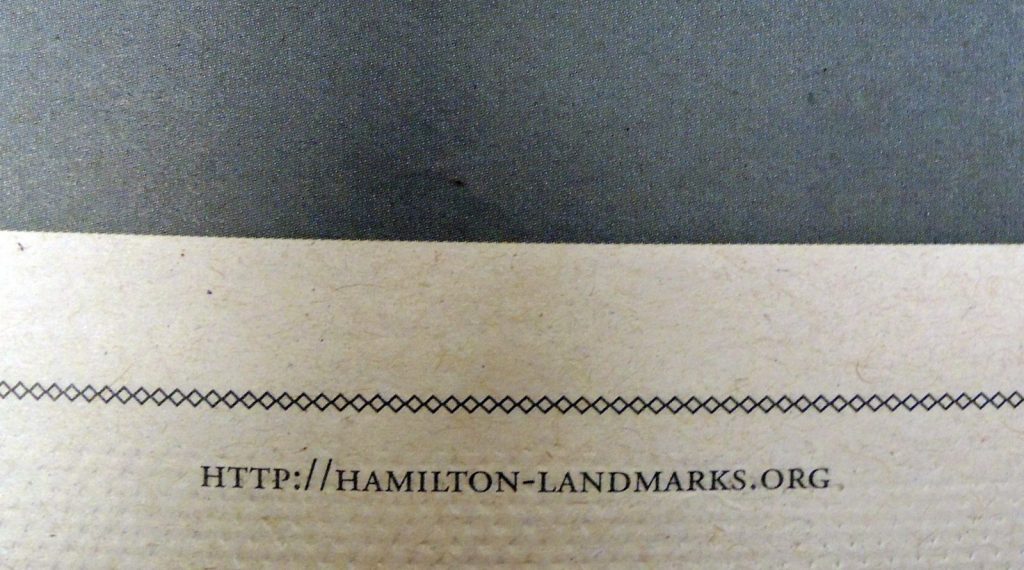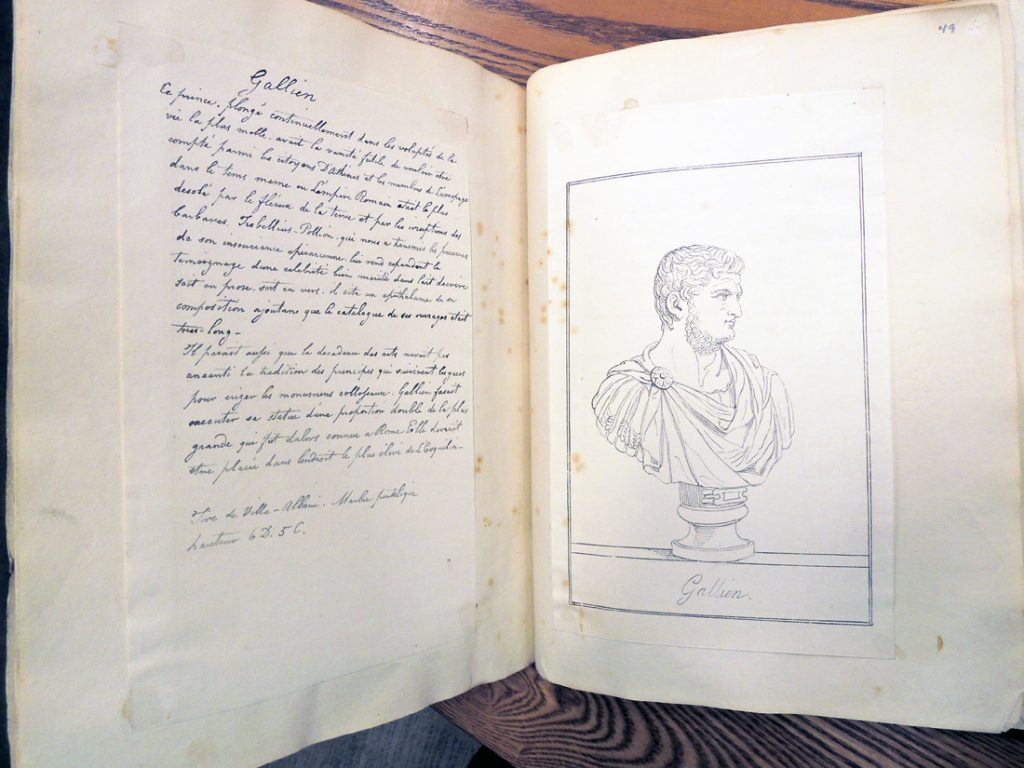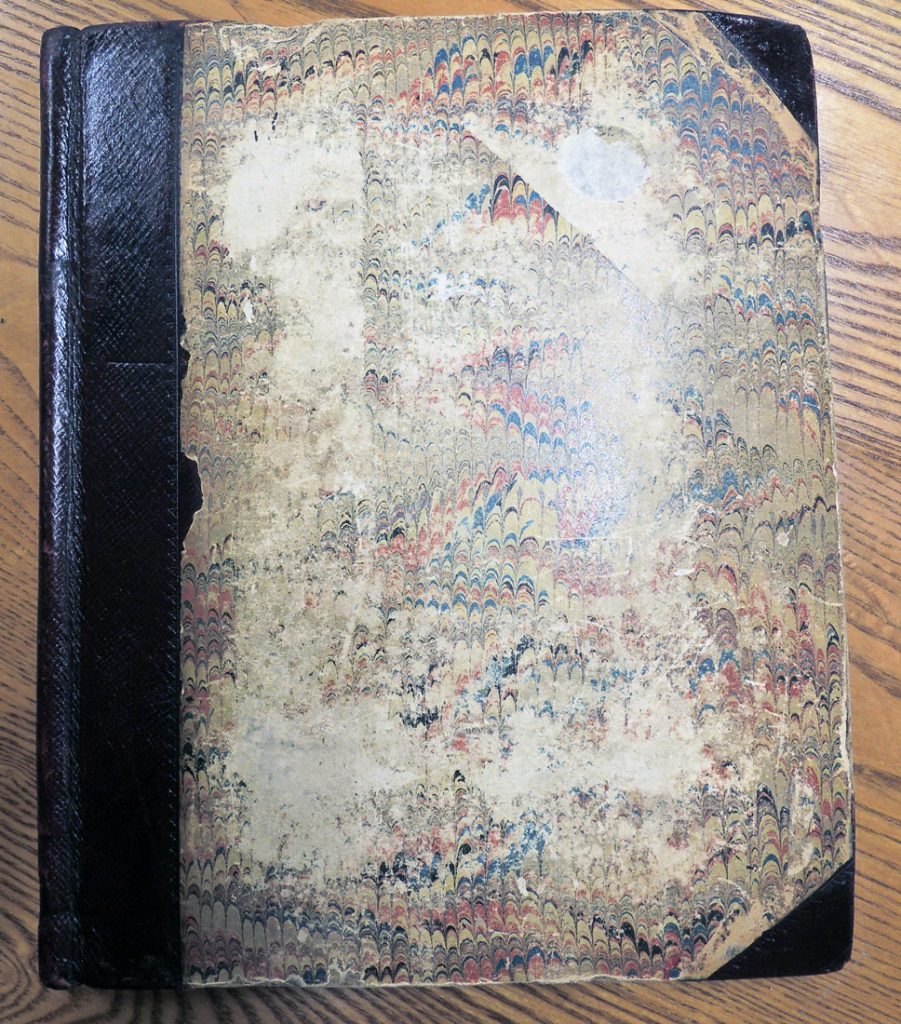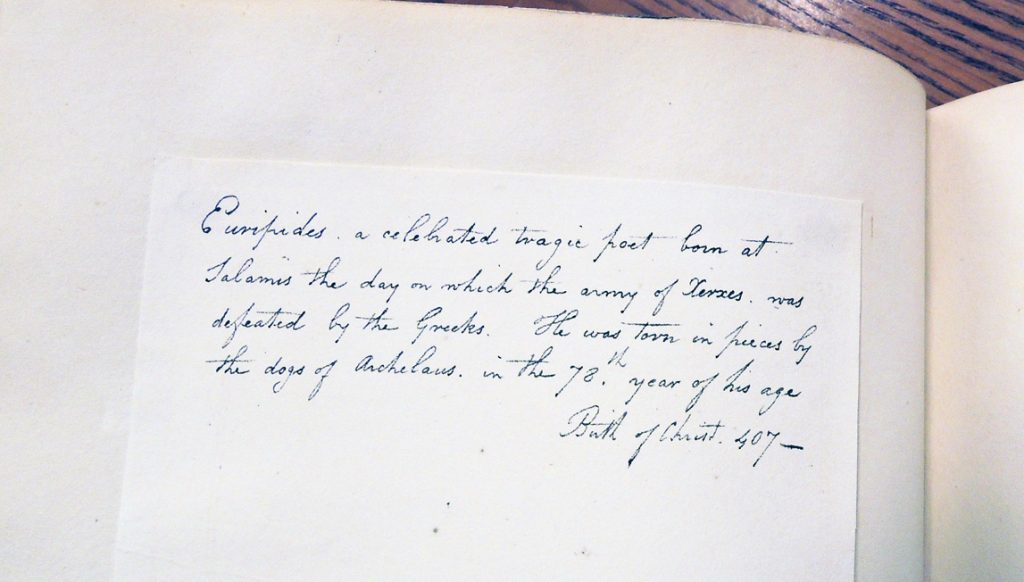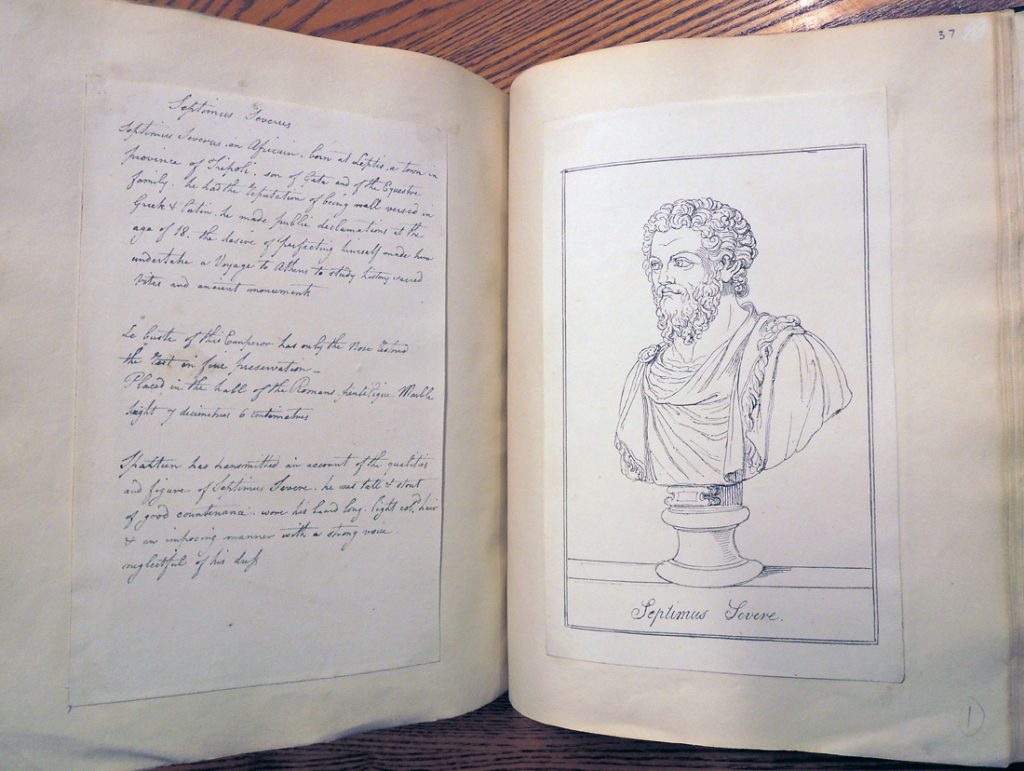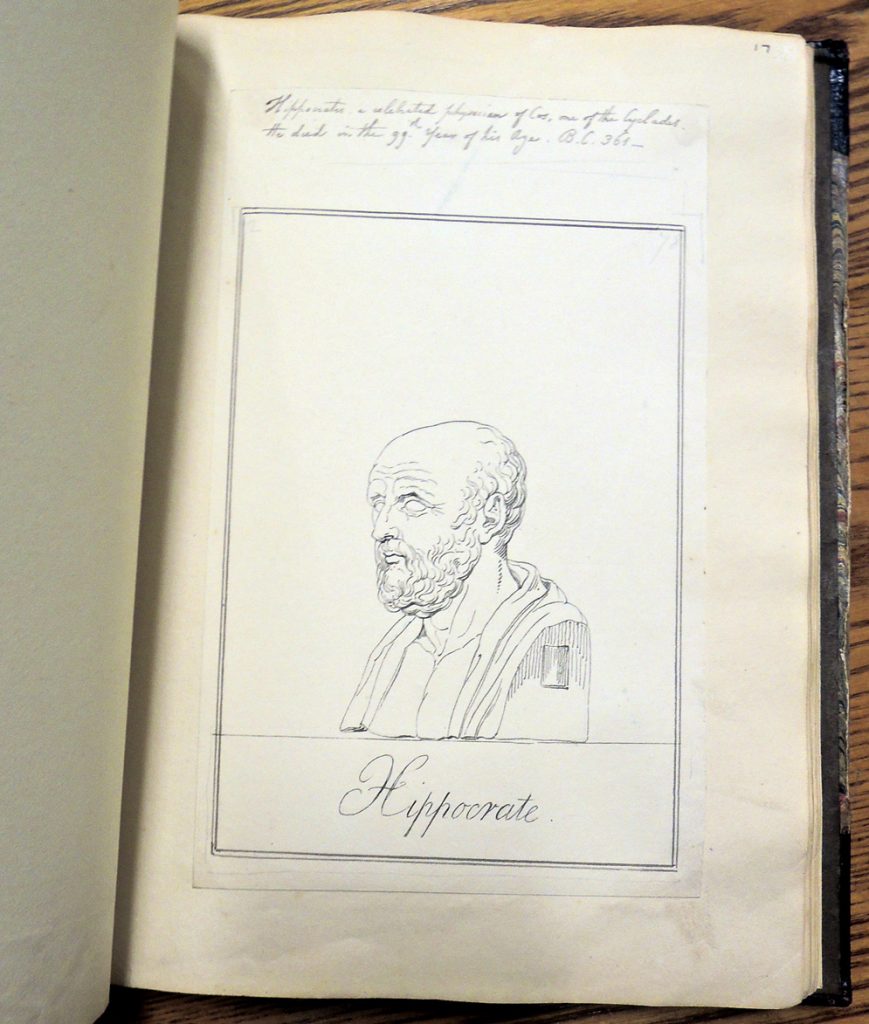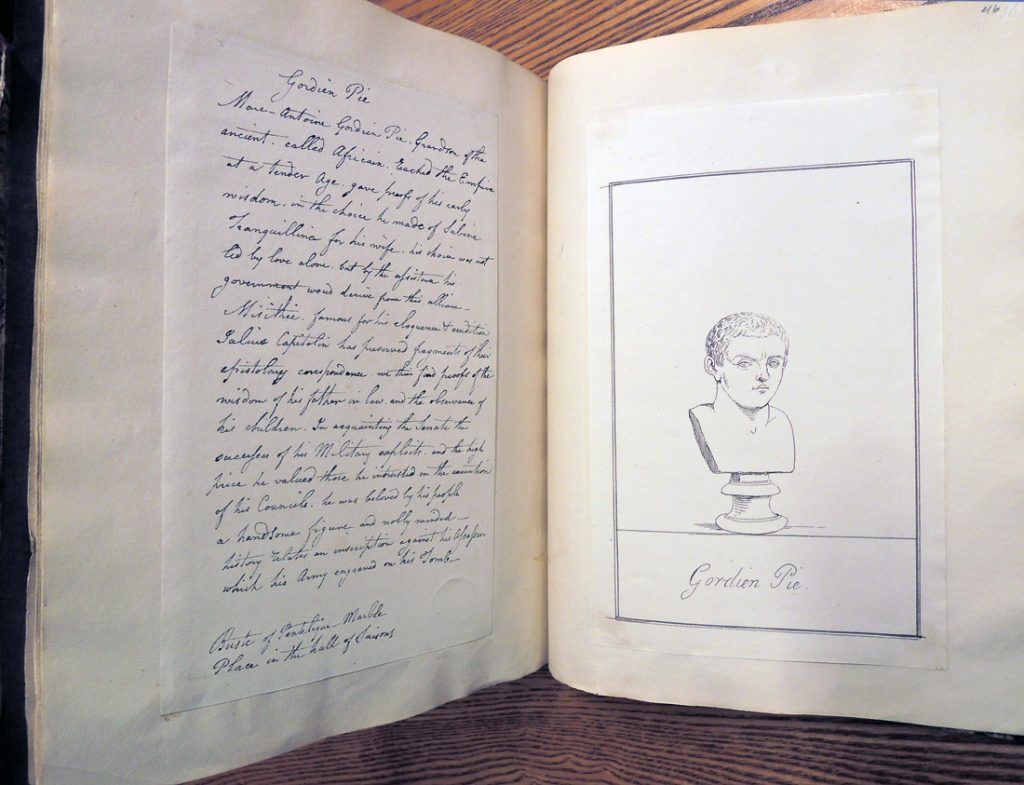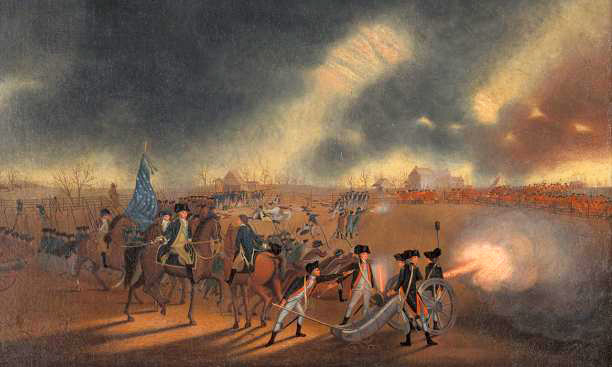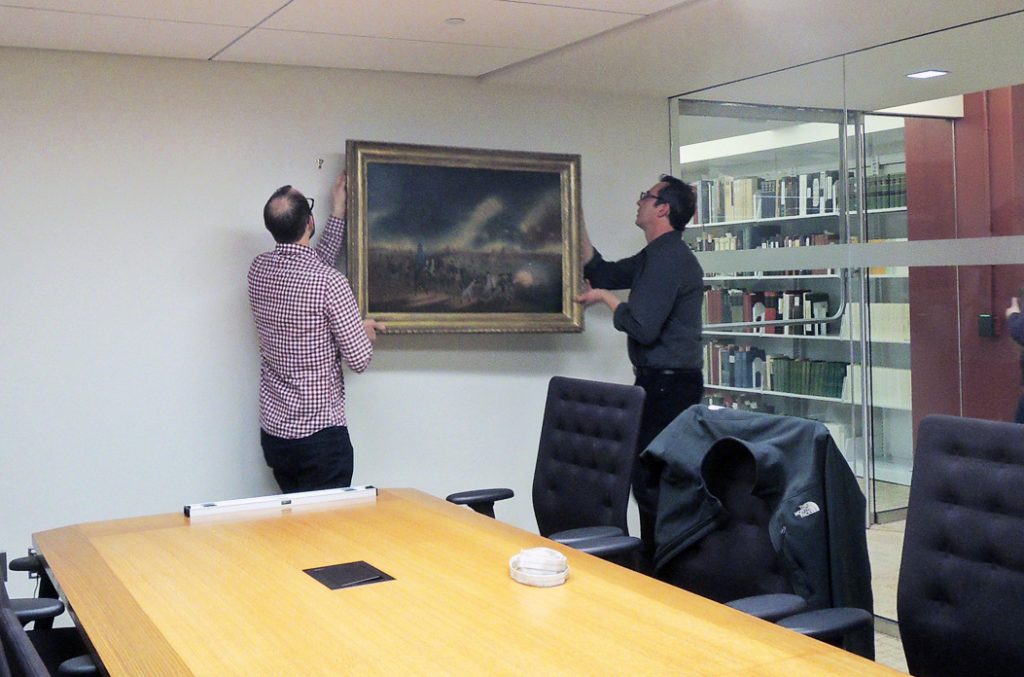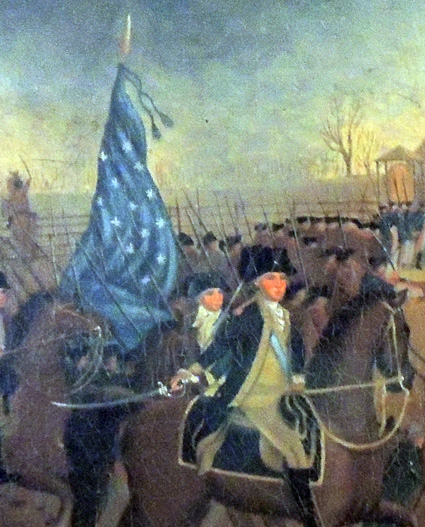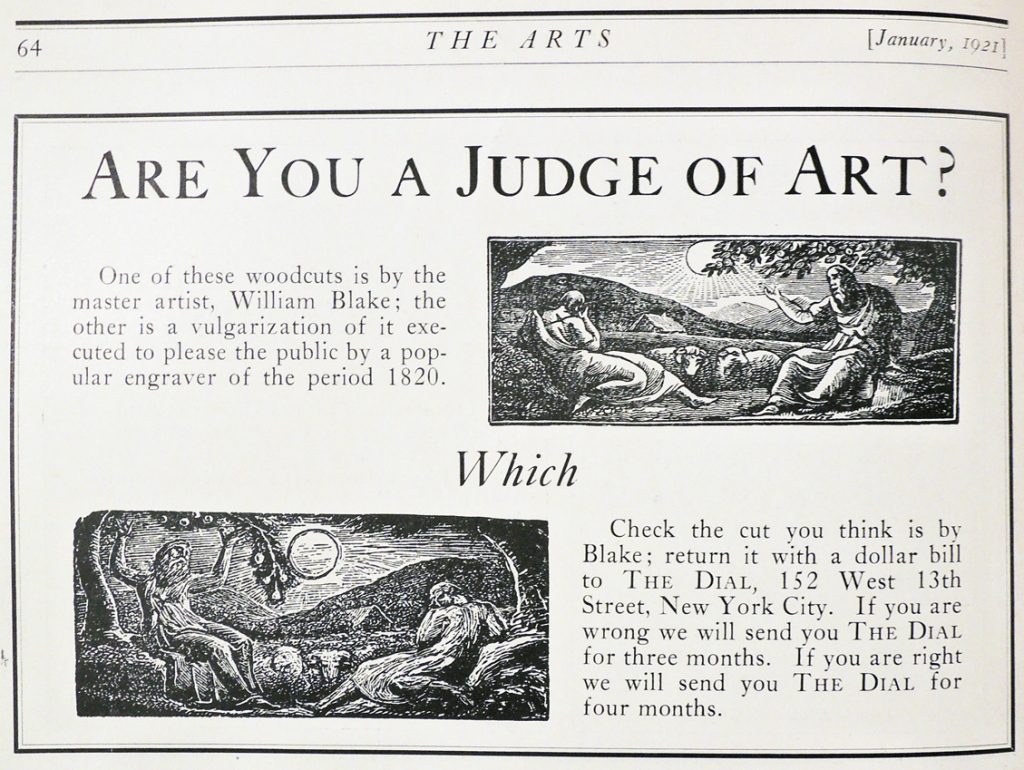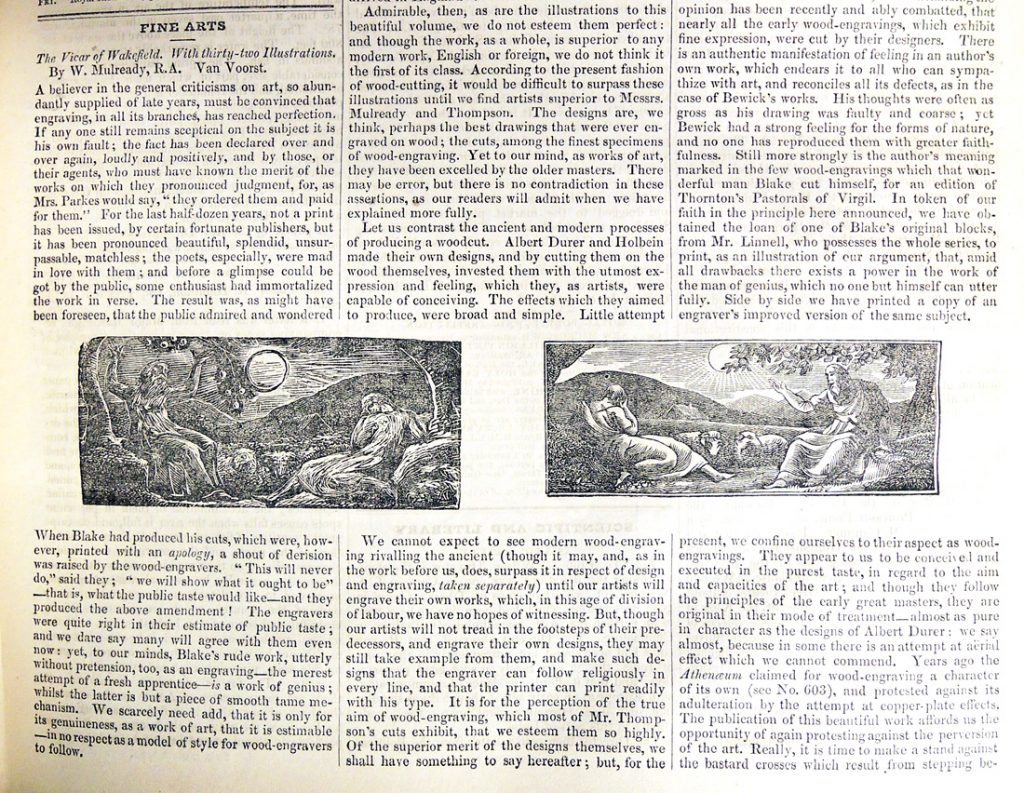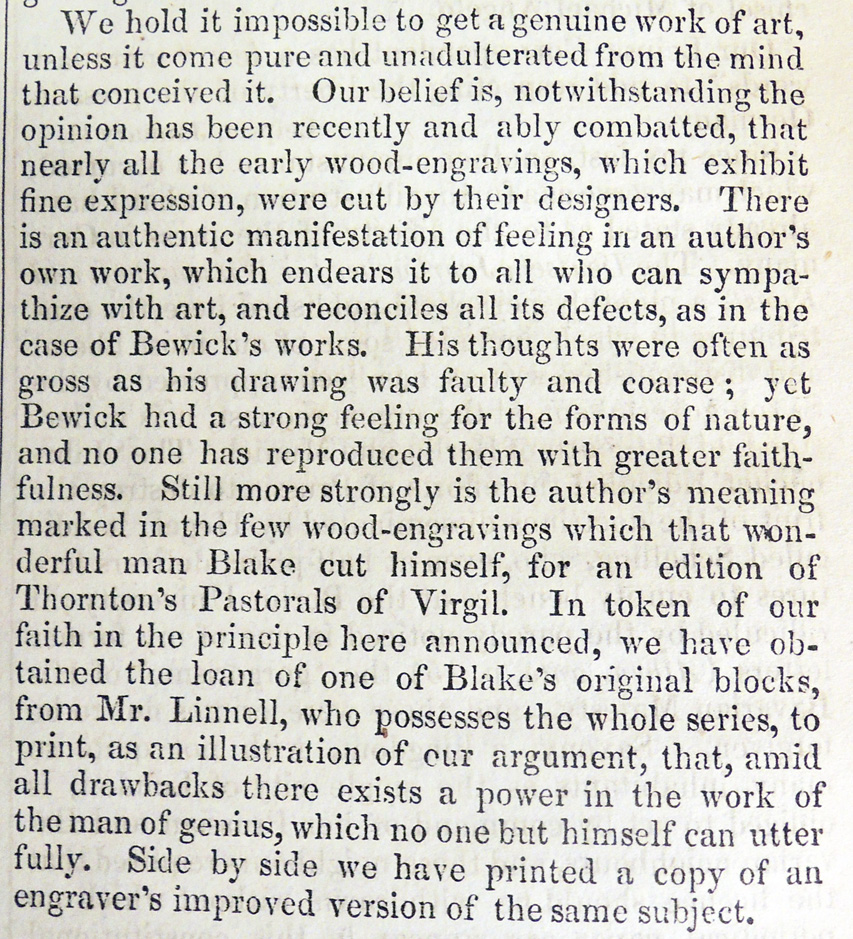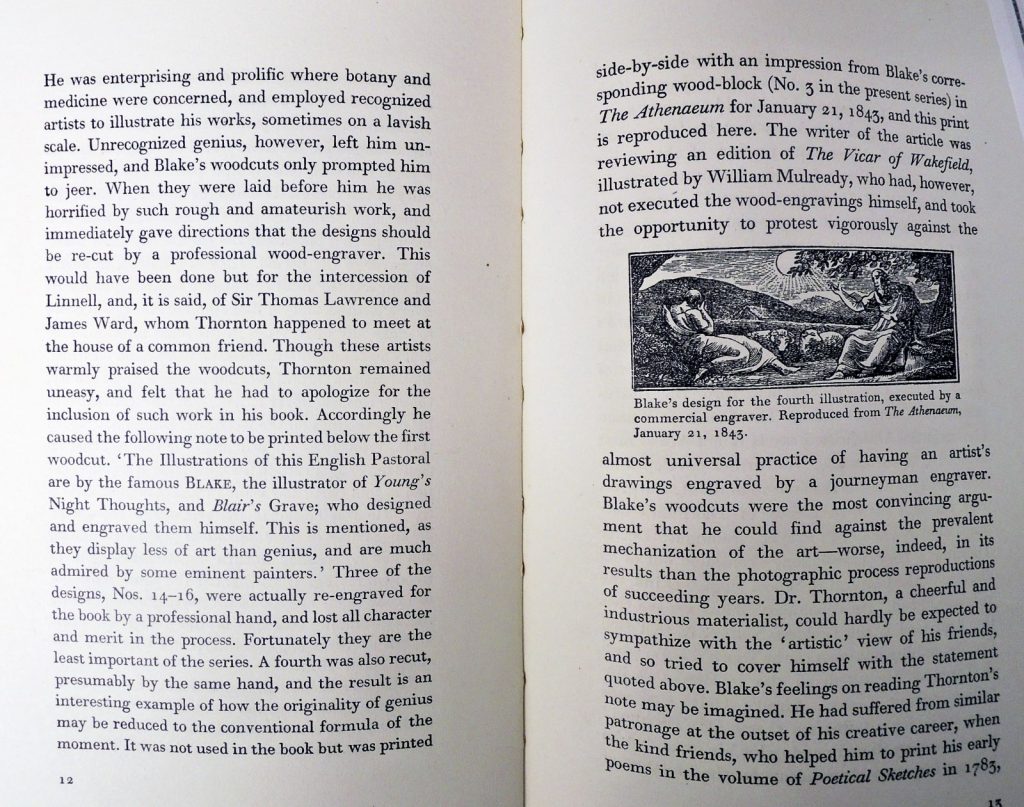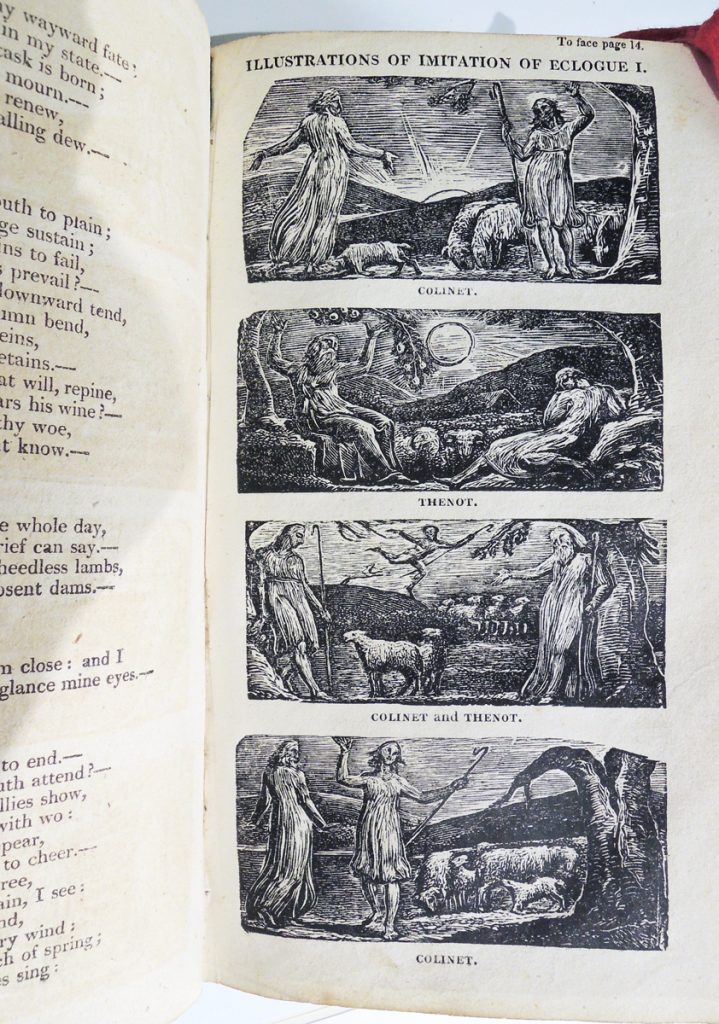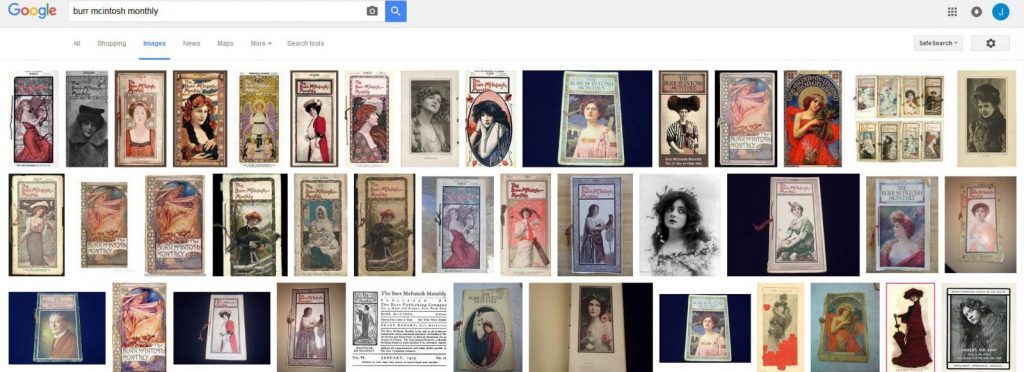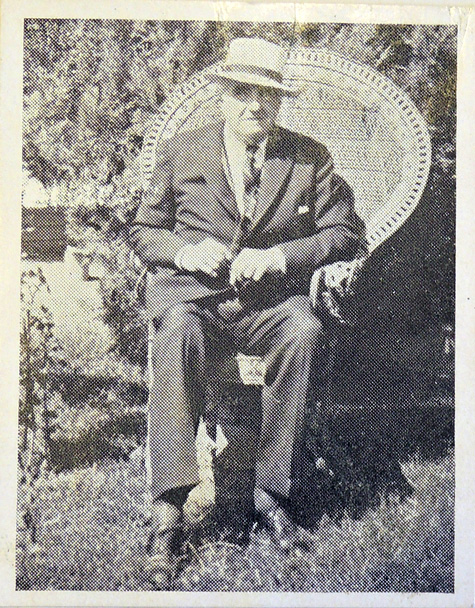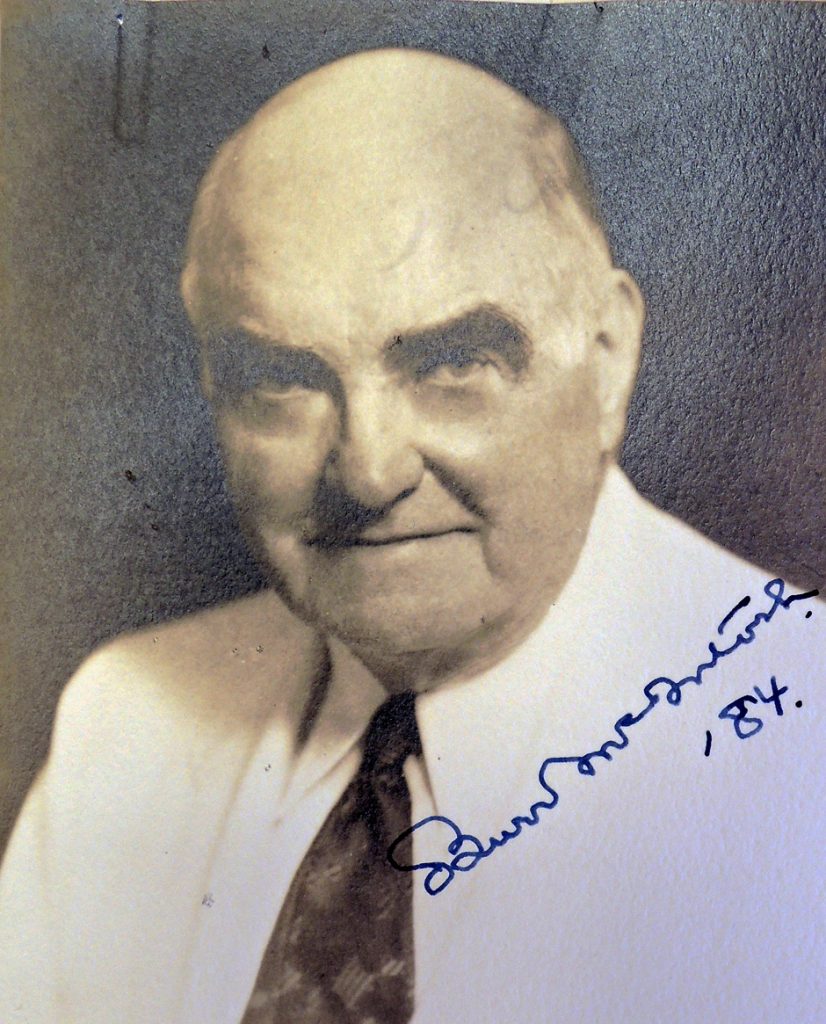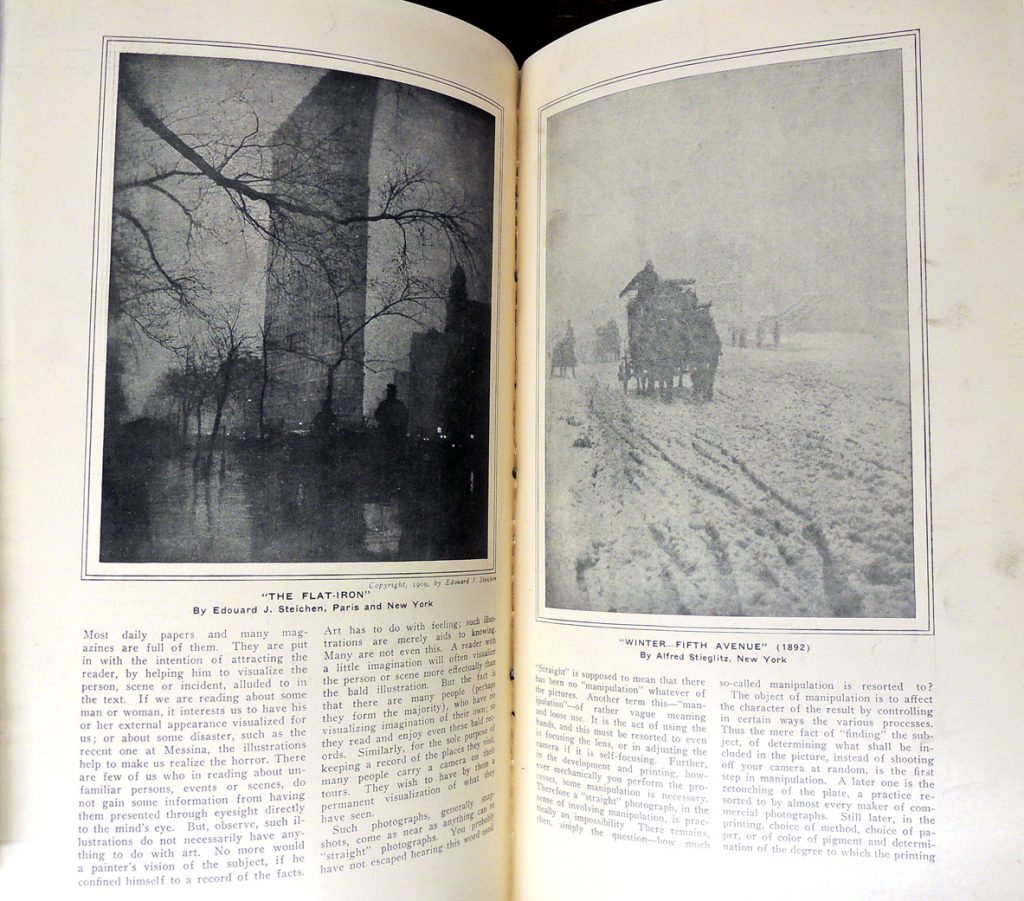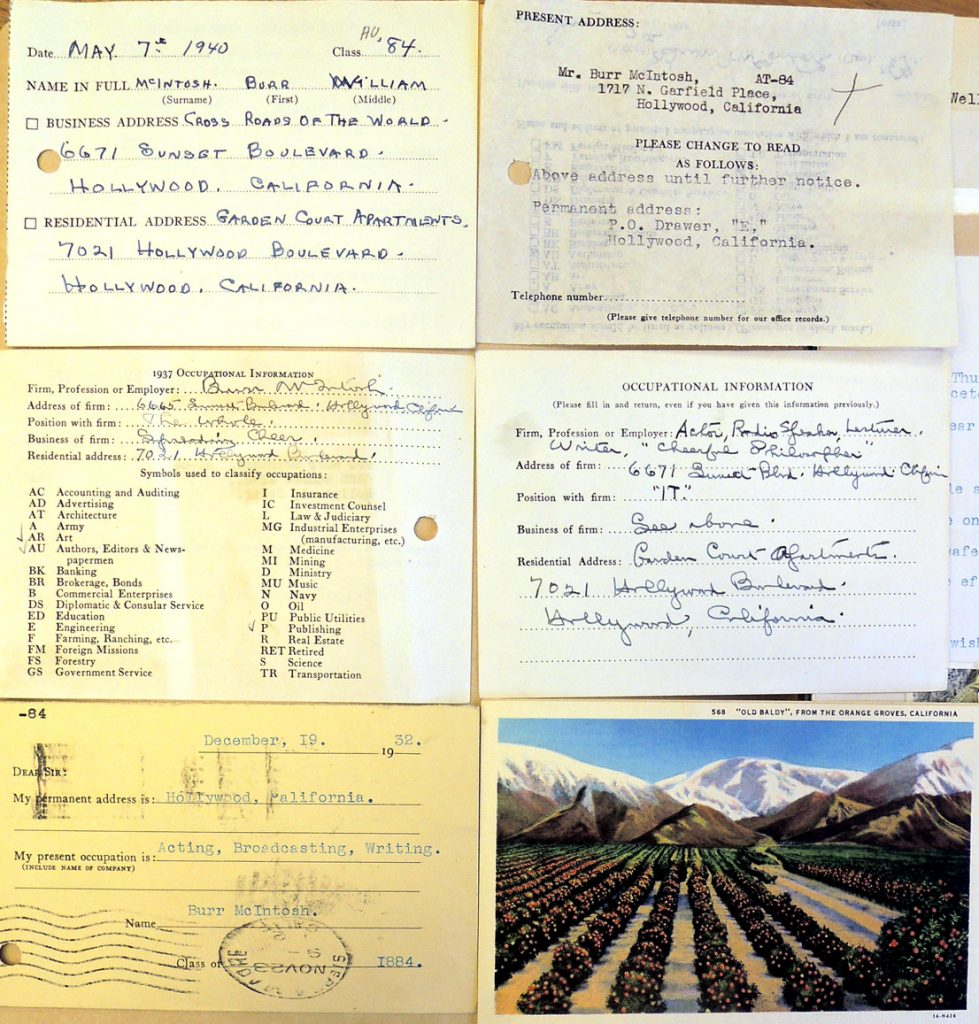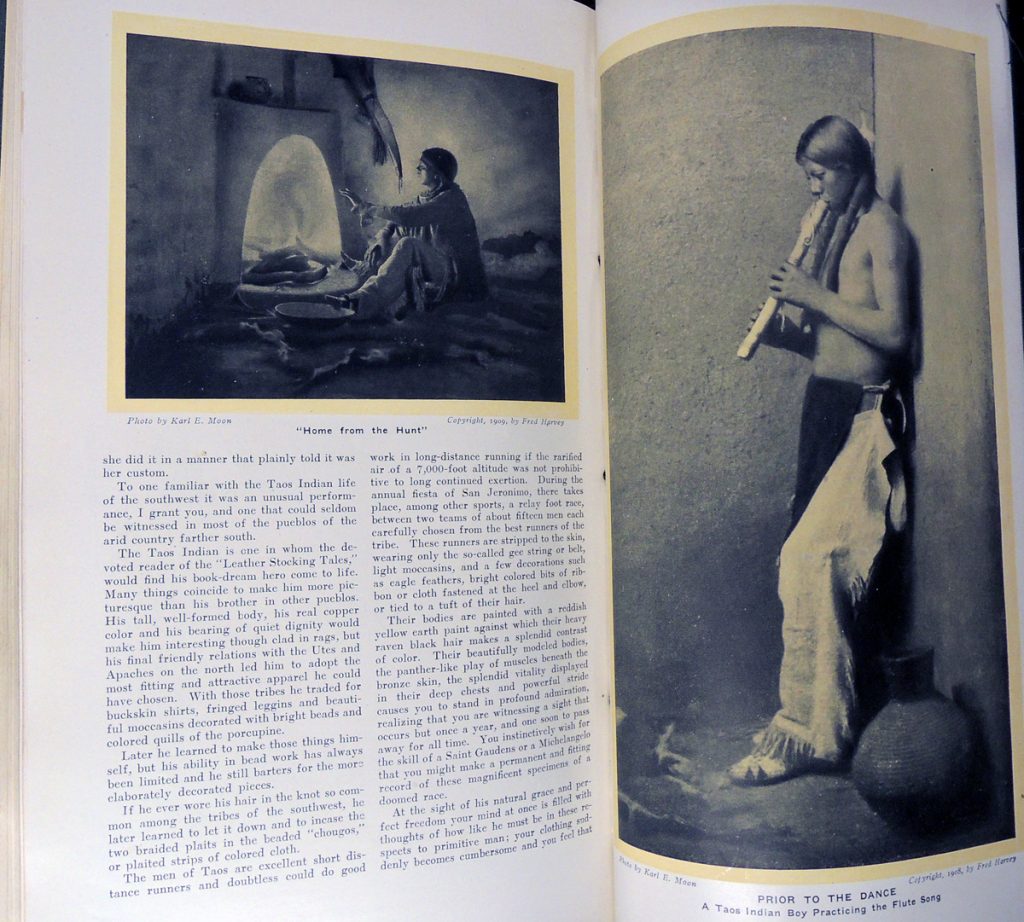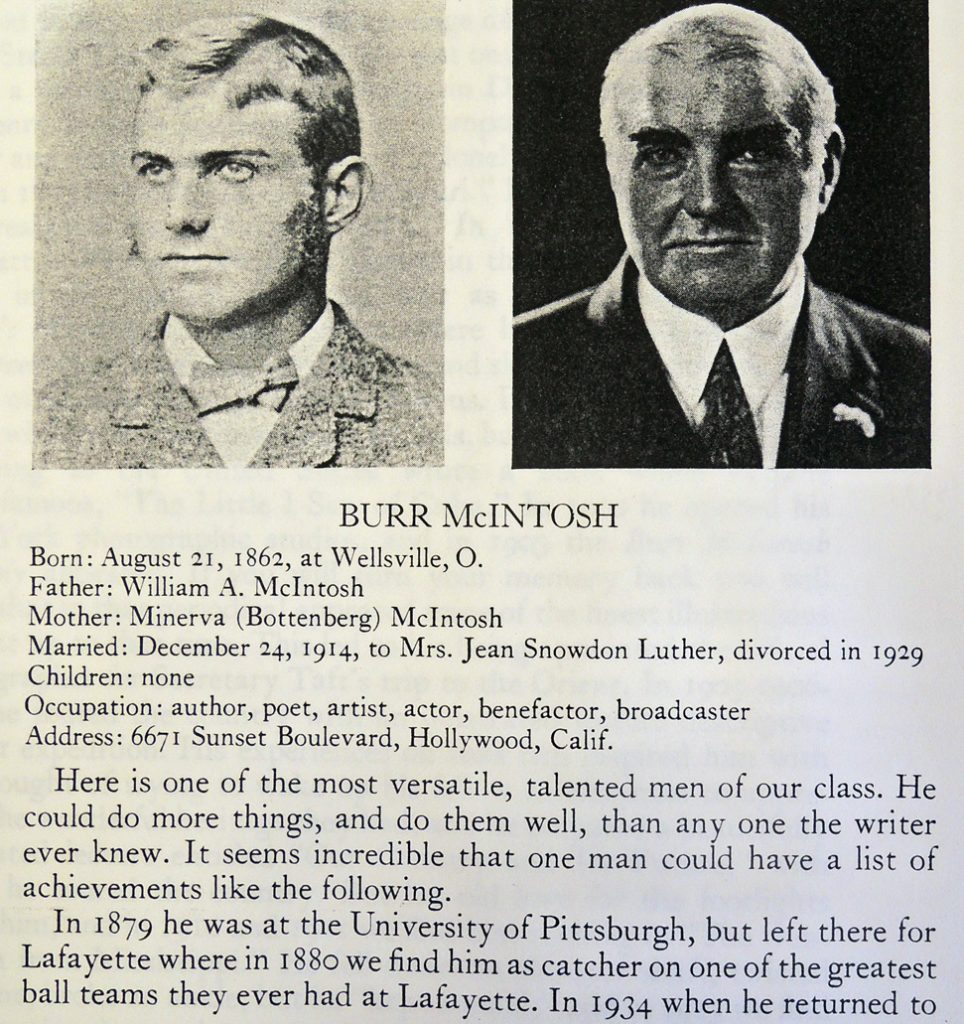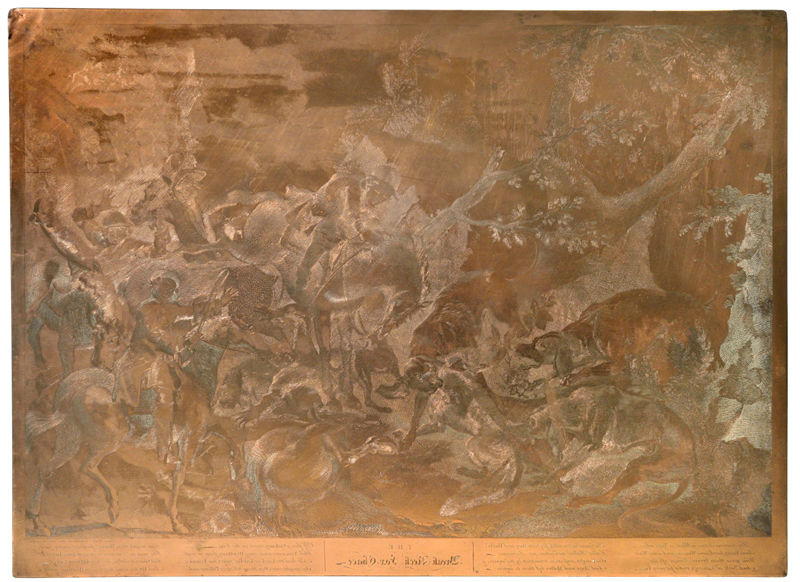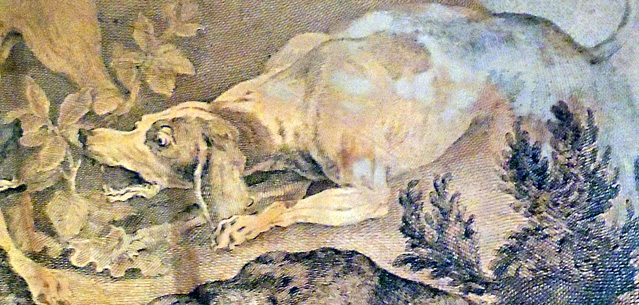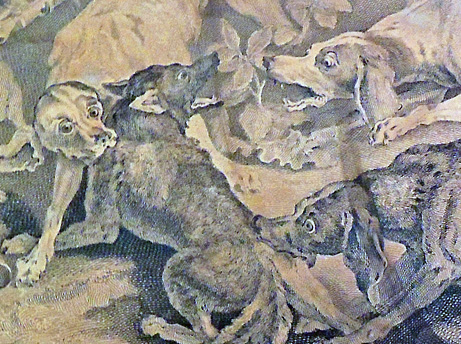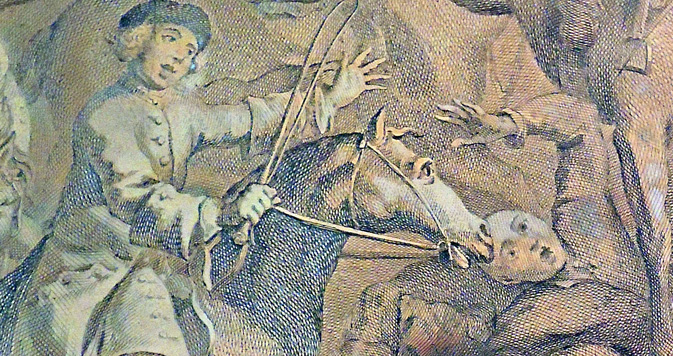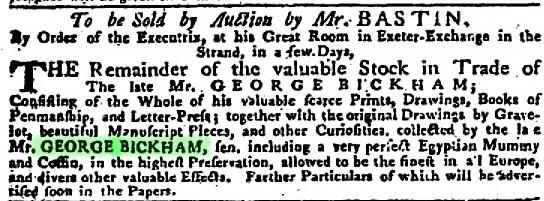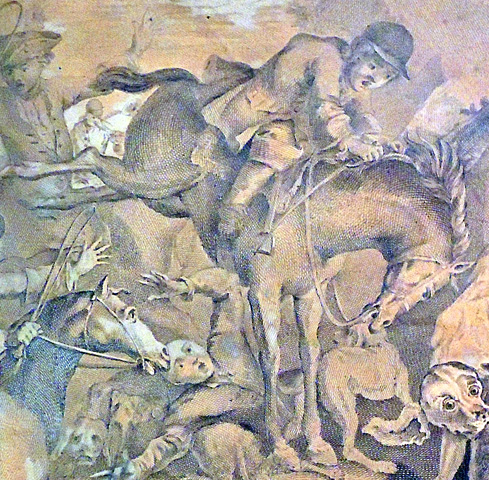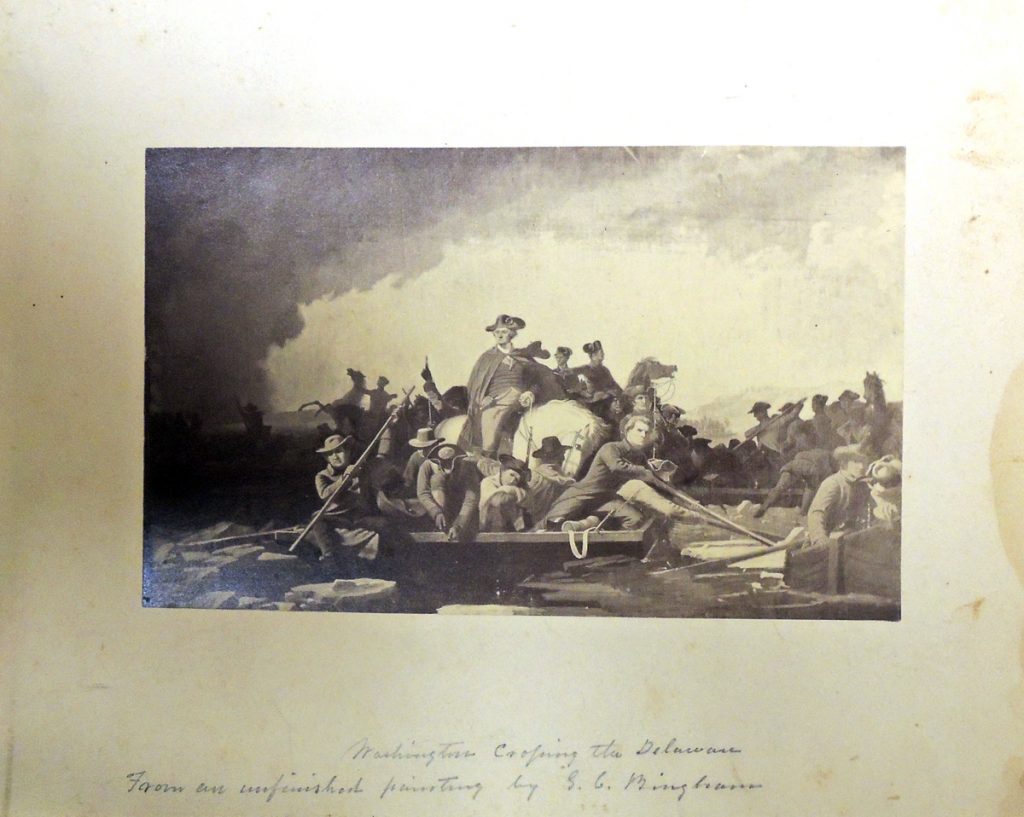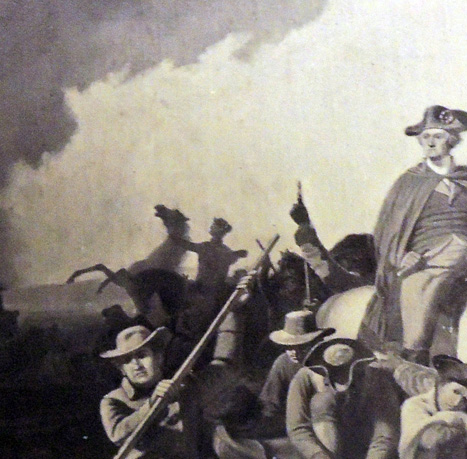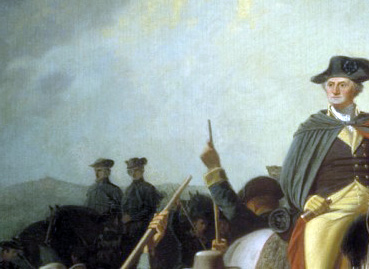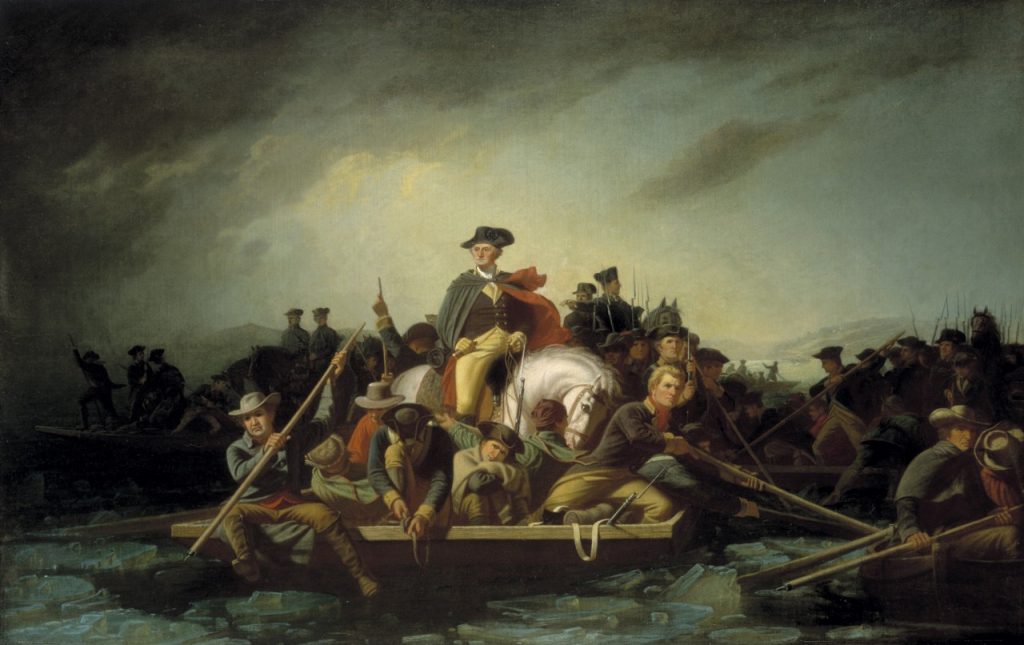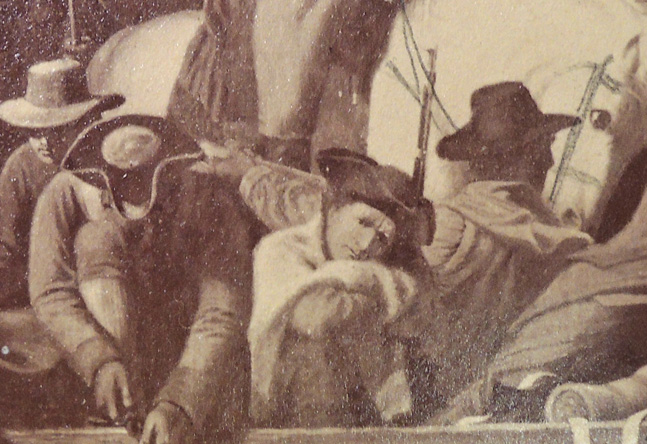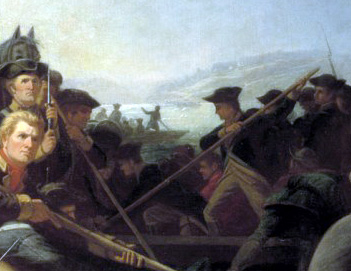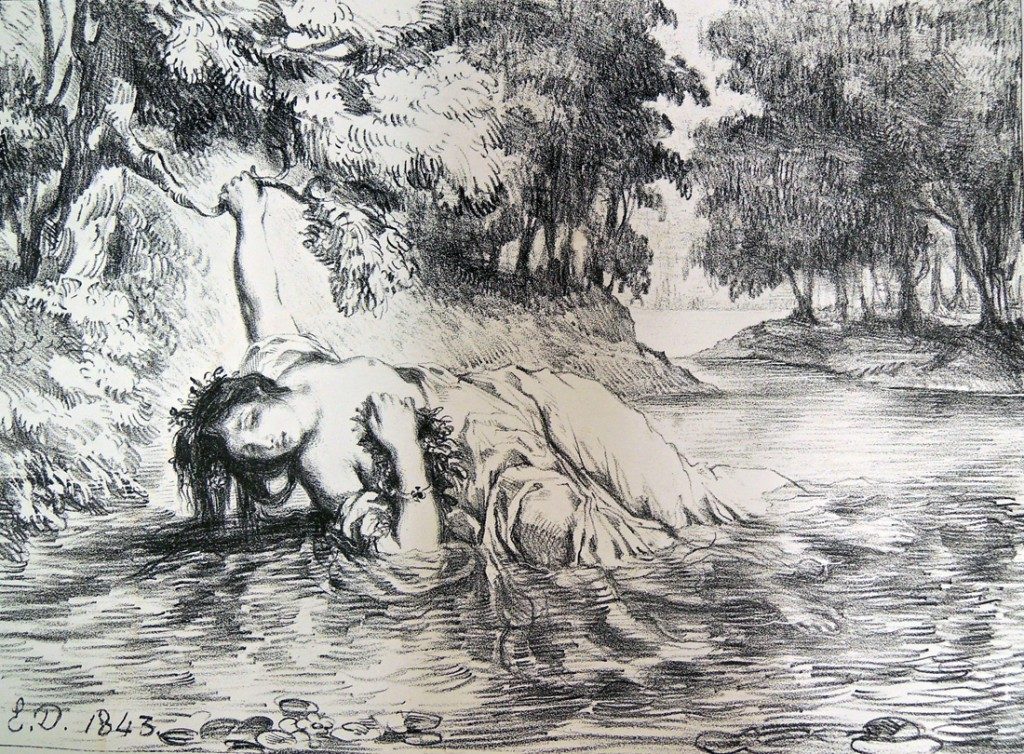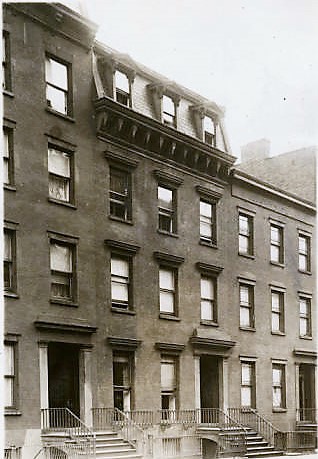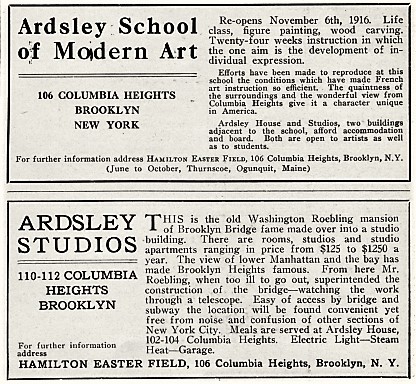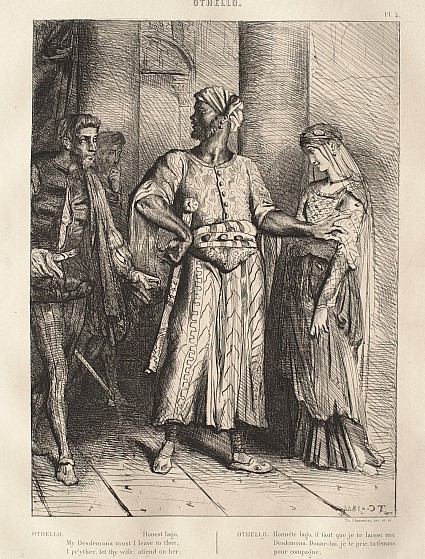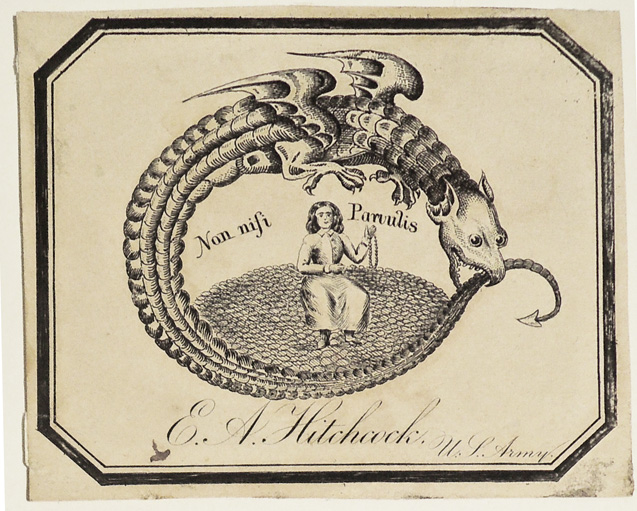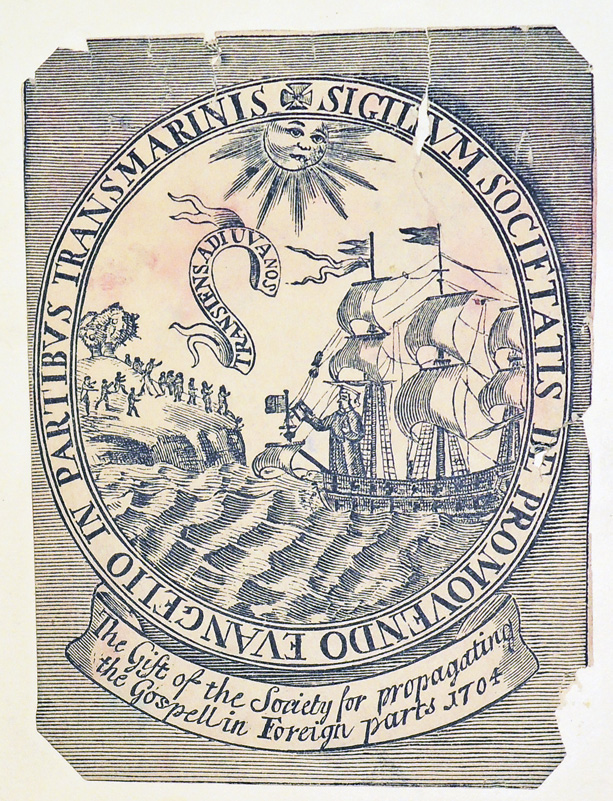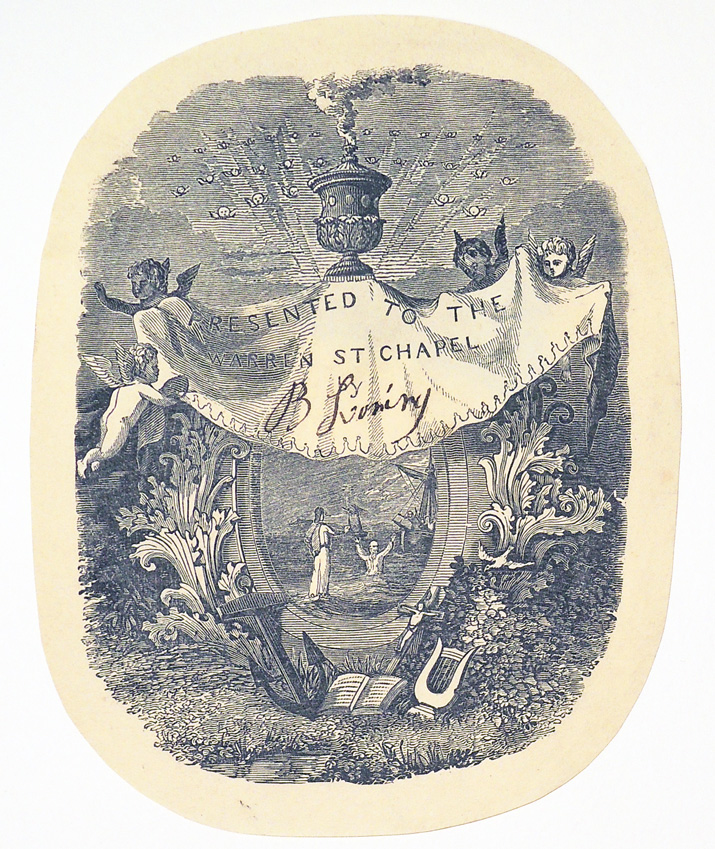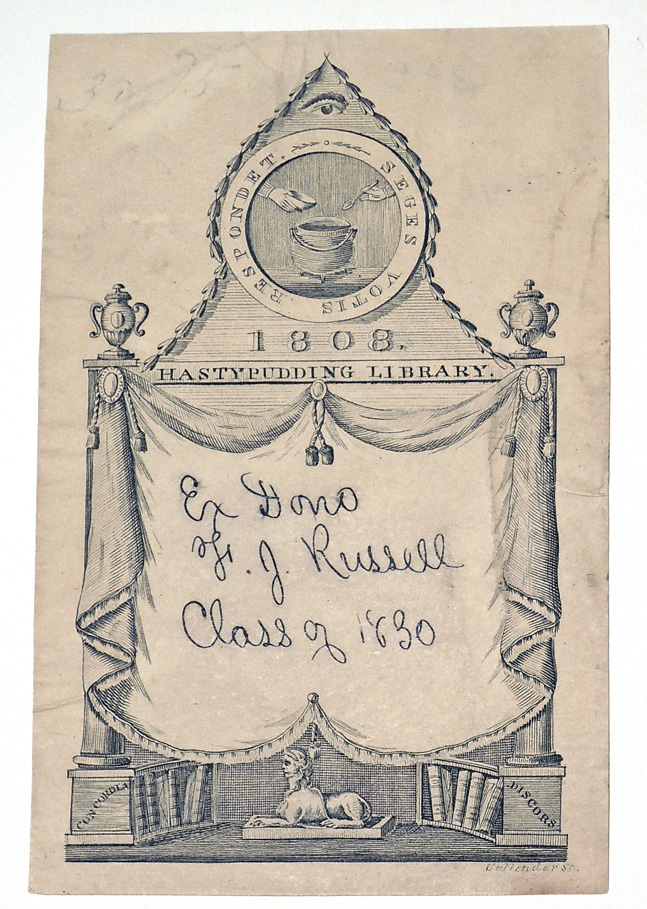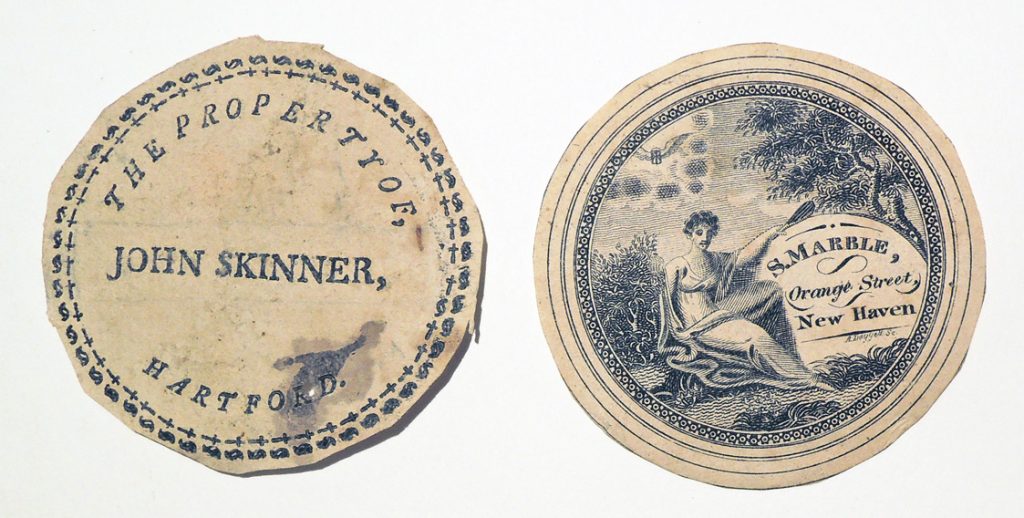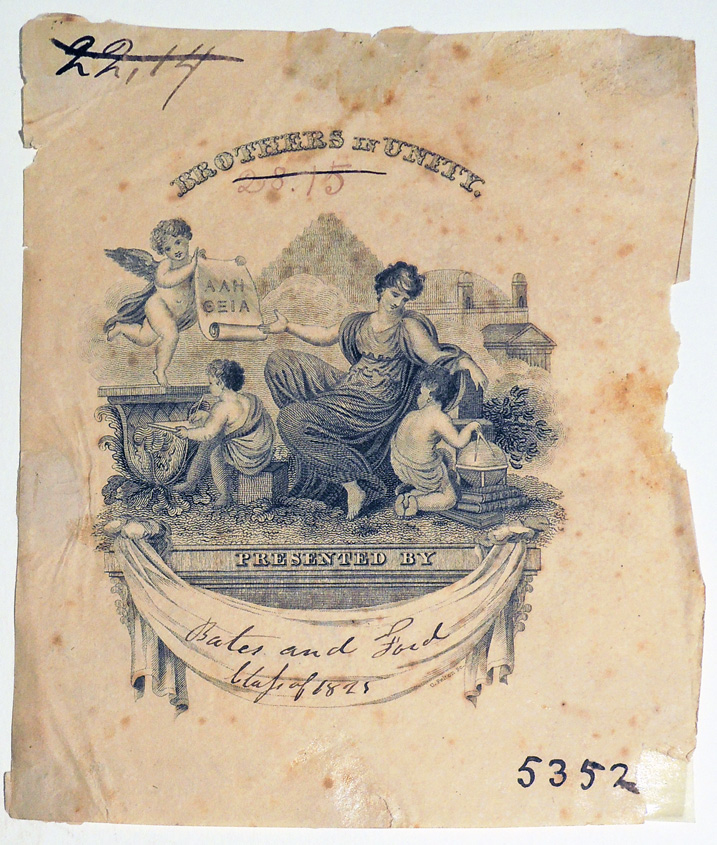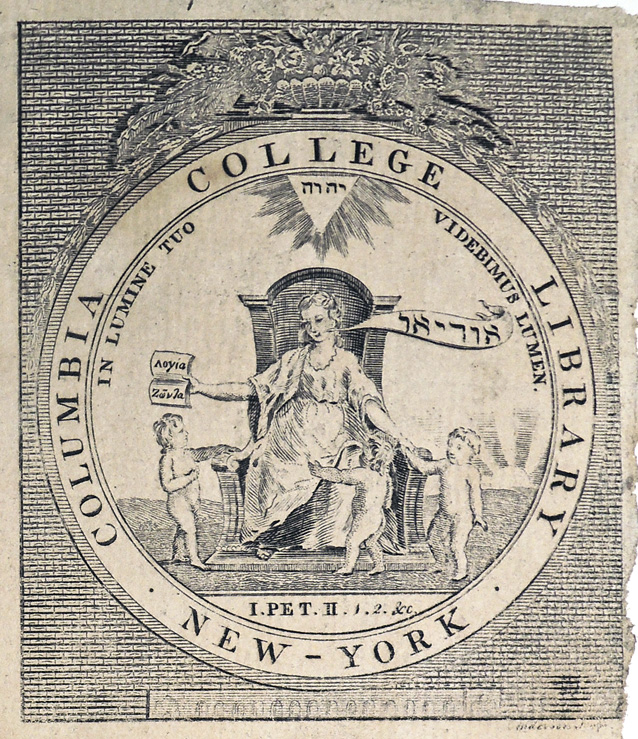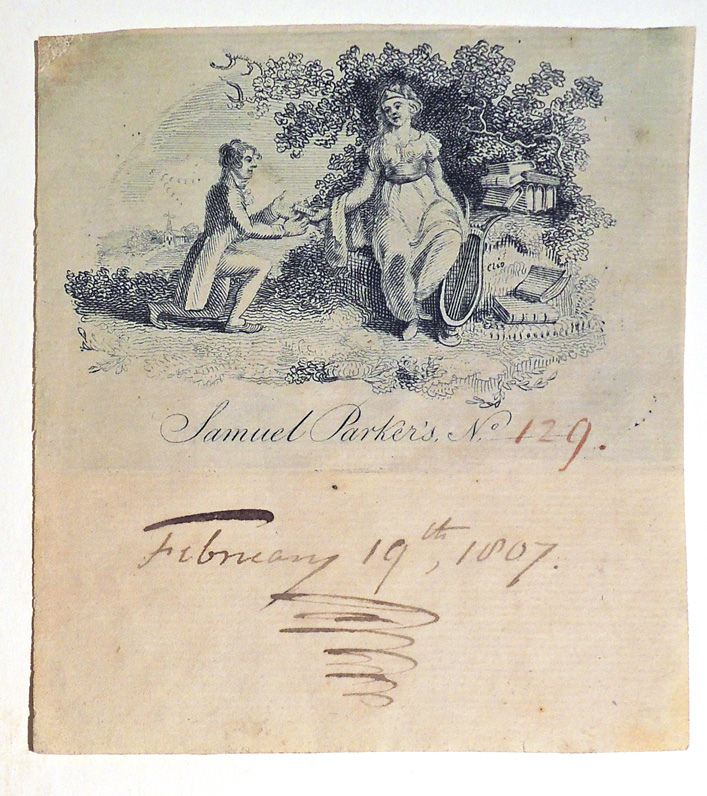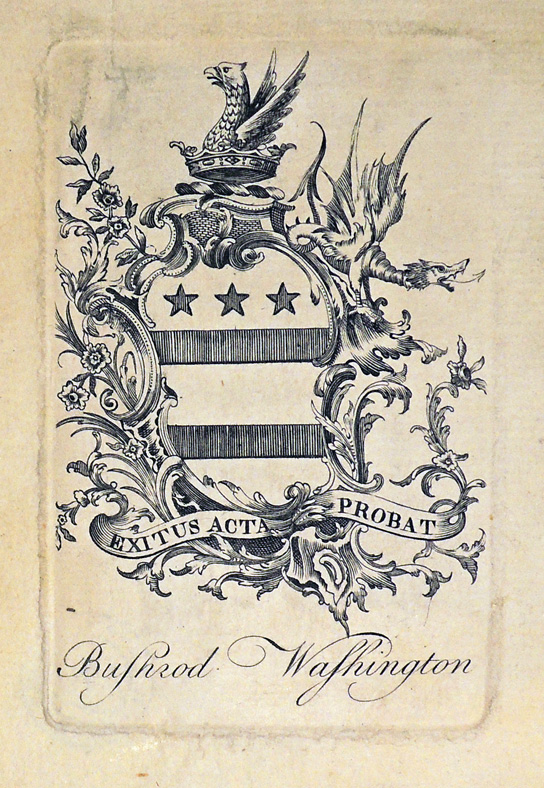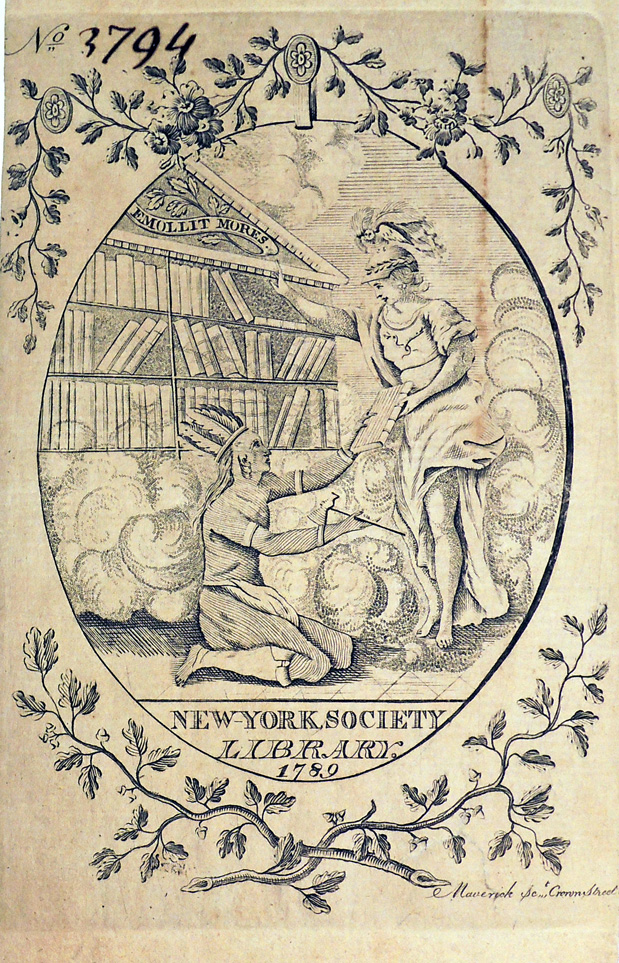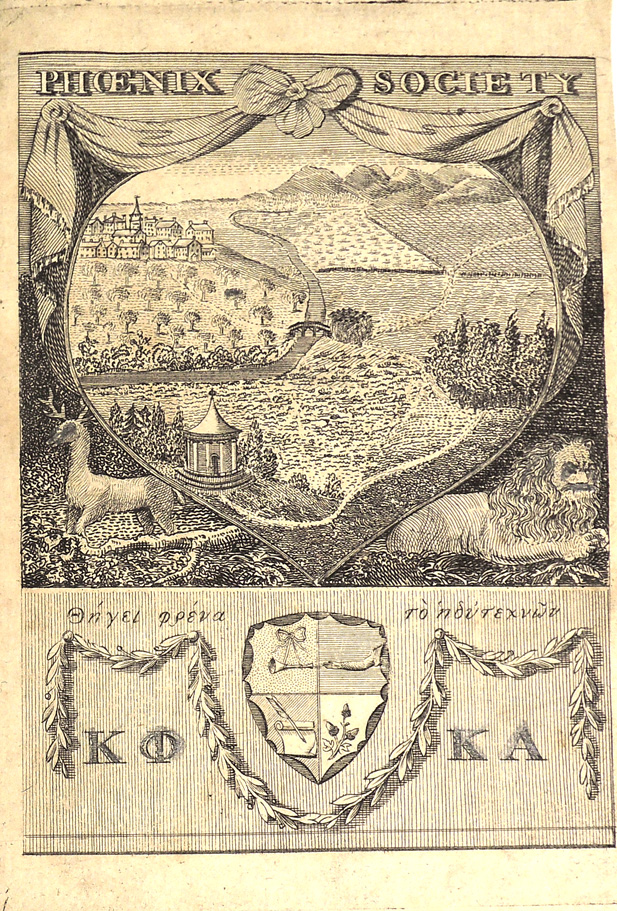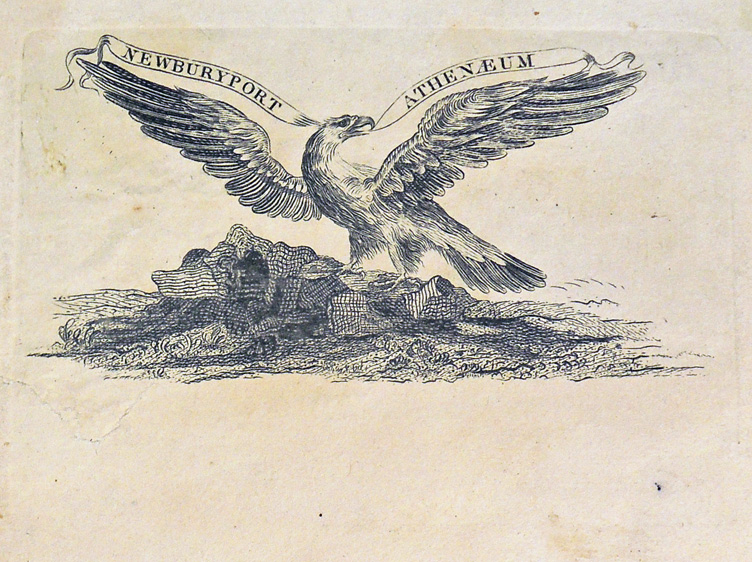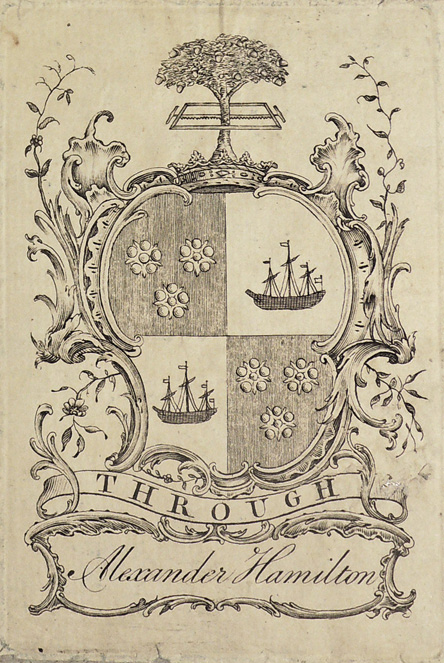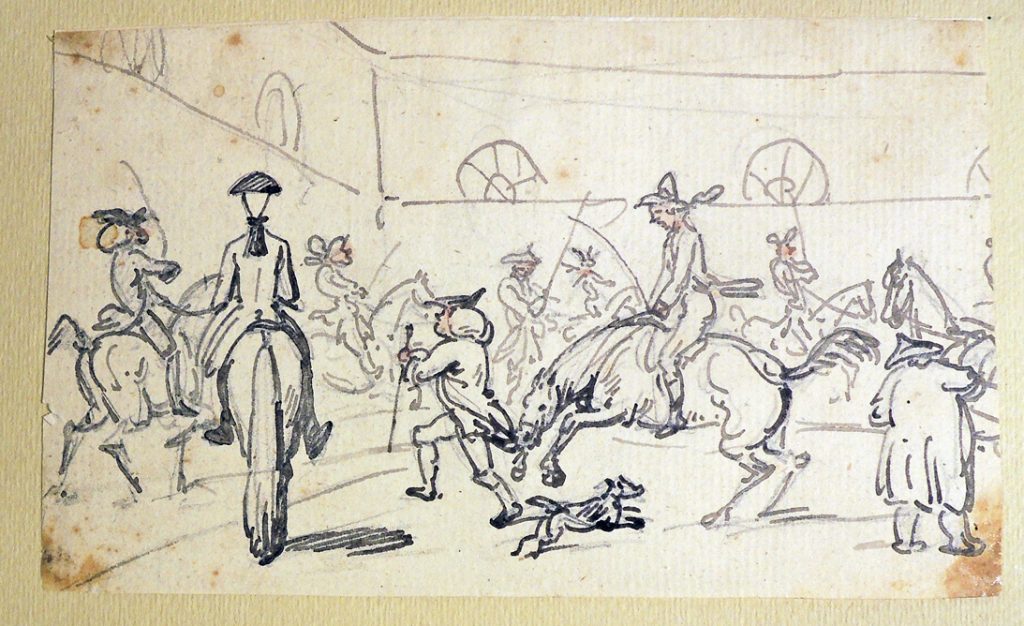 In trying to match our collection of Thomas Rowlandson drawings with published prints and books, it took nine copies of Henry Bunbury’s Academy for Grown Horsemen, before the Ackermann edition turned up with a match. Note: Geoffrey Gambado is a pseudonym for Henry William Bunbury.
In trying to match our collection of Thomas Rowlandson drawings with published prints and books, it took nine copies of Henry Bunbury’s Academy for Grown Horsemen, before the Ackermann edition turned up with a match. Note: Geoffrey Gambado is a pseudonym for Henry William Bunbury.
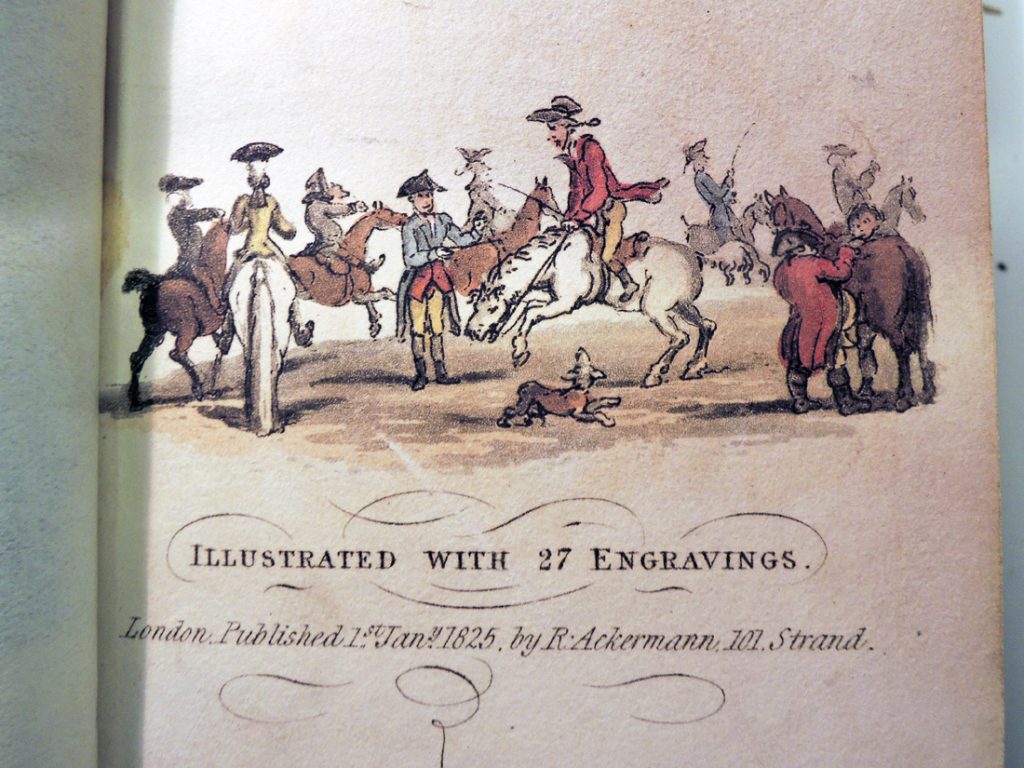
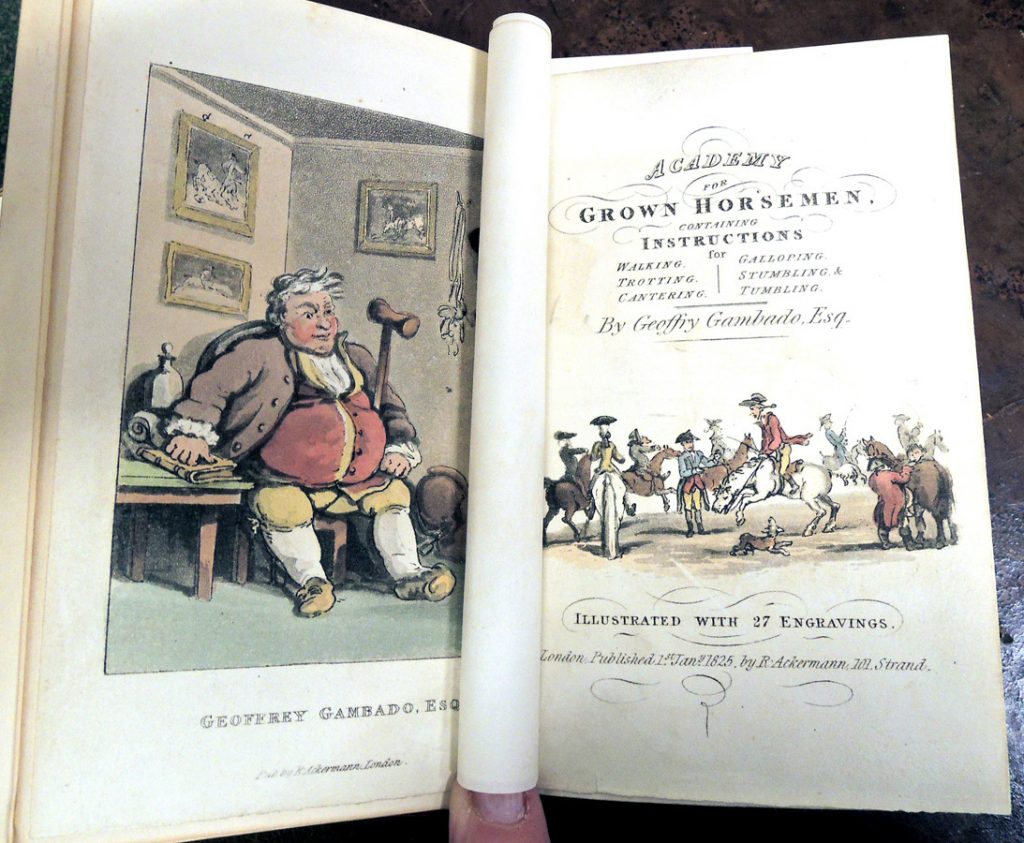 Henry William Bunbury (1750-1811). An Academy for Grown Horsemen: containing the completest instructions, for walking, trotting, … illustrated with copper plates, and adorned with a portrait of the author by Geoffrey Gambado, Esq. [pseud.] (London: Printed for R. Ackermann, 1825). xxvii, 30-75, lxxx-xcix, 102-201 p., [27] col. plates: ill.; 15 cm. Graphic Arts Collection (GA) Rowlandson 1787.33 and Rare Books: Laurance Roberts Carton Hunting Coll. (ExCarton SF301 .xB93 1825
Henry William Bunbury (1750-1811). An Academy for Grown Horsemen: containing the completest instructions, for walking, trotting, … illustrated with copper plates, and adorned with a portrait of the author by Geoffrey Gambado, Esq. [pseud.] (London: Printed for R. Ackermann, 1825). xxvii, 30-75, lxxx-xcix, 102-201 p., [27] col. plates: ill.; 15 cm. Graphic Arts Collection (GA) Rowlandson 1787.33 and Rare Books: Laurance Roberts Carton Hunting Coll. (ExCarton SF301 .xB93 1825
The match was first discovered by Joseph Rothrock (former curator of graphic arts) and documented in the Princeton University Library Chronicle 36, no. 2 (winter 1975): 87-110: http://libweb5.princeton.edu/visual_materials/pulc/pulc_v_36_n_2.pdf. This was not an easy attribution to make since Bunbury’s book comes in many shapes and sizes, not to mention the variations of plates inside. Here are a few on our shelves:
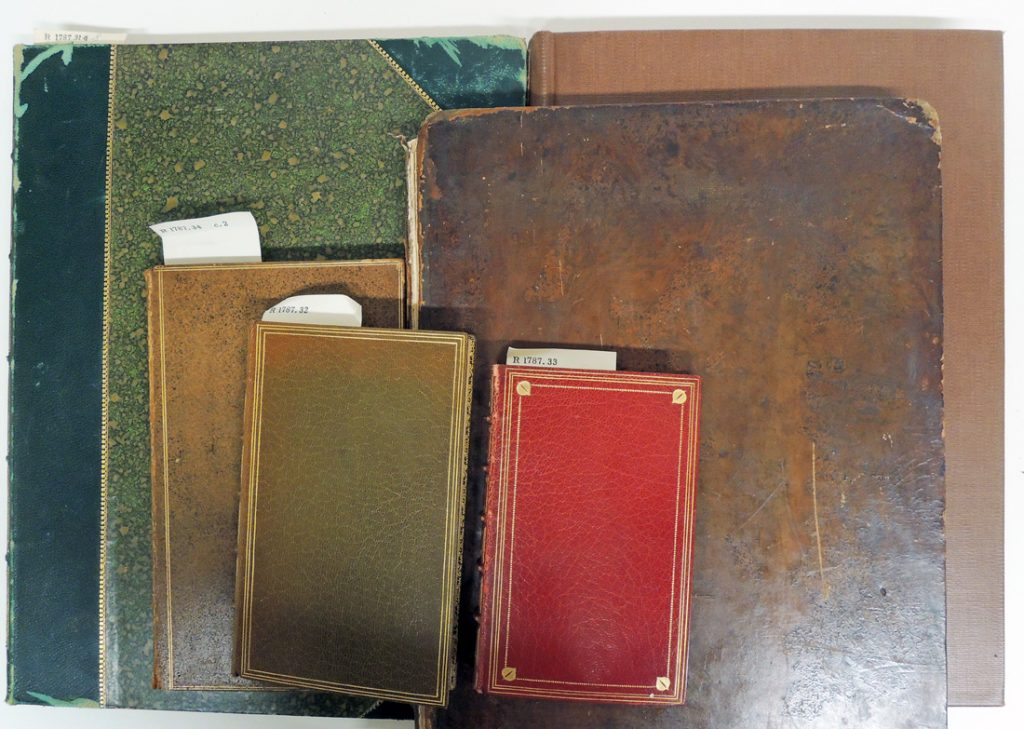
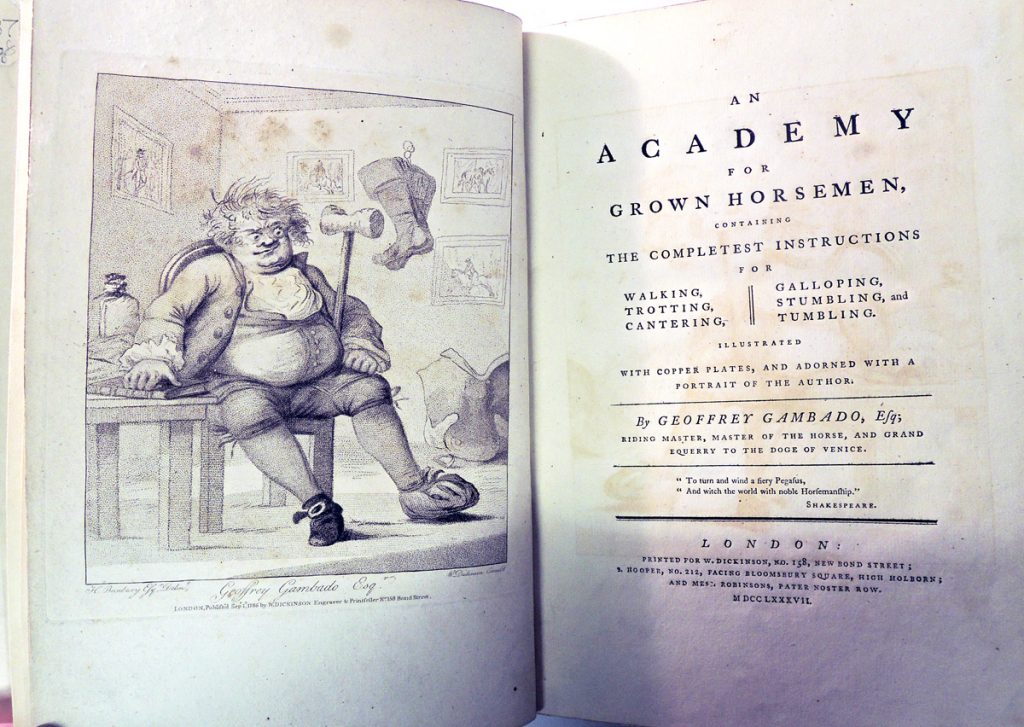 Henry William Bunbury (1750-1811). An Academy for Grown Horsemen; containing the completest instructions for walking, trotting, cantering, galloping, stumbling and tumbling.: The annals of horsemanship: containing accounts of accidental experiments and experimental accidents, both successful and unsuccessful; communicated by various correspondents to the author, Geoffrey Gambado, Esq. … Illustrated with cuts, by the most eminent artists (London: Printed for Vernor, Hood, and Sharpe; Longman, Hurst, Rees, and Orme; J. Walker; J. Harris; and W. Bayne; at the union printing-office, … by W. Wilson., 1808). [2], xvi, 28, xvi, 69, [3] p., [29] leaves of plates: col. ill.; 18 cm. With 29 leaves of hand-coloured satirical plates.; plates signed: H. Bunbury esq. delin. Some plates with imprint: London. Pub. by T. Tegg, May 4-1808. Graphic Arts Collection (GA) Rowlandson 1787.32
Henry William Bunbury (1750-1811). An Academy for Grown Horsemen; containing the completest instructions for walking, trotting, cantering, galloping, stumbling and tumbling.: The annals of horsemanship: containing accounts of accidental experiments and experimental accidents, both successful and unsuccessful; communicated by various correspondents to the author, Geoffrey Gambado, Esq. … Illustrated with cuts, by the most eminent artists (London: Printed for Vernor, Hood, and Sharpe; Longman, Hurst, Rees, and Orme; J. Walker; J. Harris; and W. Bayne; at the union printing-office, … by W. Wilson., 1808). [2], xvi, 28, xvi, 69, [3] p., [29] leaves of plates: col. ill.; 18 cm. With 29 leaves of hand-coloured satirical plates.; plates signed: H. Bunbury esq. delin. Some plates with imprint: London. Pub. by T. Tegg, May 4-1808. Graphic Arts Collection (GA) Rowlandson 1787.32
 Henry William Bunbury (1750-1811). An Academy for Grown Horsemen: containing the completest instructions for walking, trotting, cantering, galloping, stumbling, and tumbling: illustrated with copper plates, and adorned with a portrait of the author / by Geoffrey Gambado [i.e. H. W. Bunbury]. 2d ed. (London: Printed for Hooper and Wigstead, 1796). xx, 36 p., [12] leaves of plates: col. ill.; 34 cm. Graphic Arts Collection (GA) Oversize Rowlandson 1791.5q and Rare Books (Ex) 2011-0036Q
Henry William Bunbury (1750-1811). An Academy for Grown Horsemen: containing the completest instructions for walking, trotting, cantering, galloping, stumbling, and tumbling: illustrated with copper plates, and adorned with a portrait of the author / by Geoffrey Gambado [i.e. H. W. Bunbury]. 2d ed. (London: Printed for Hooper and Wigstead, 1796). xx, 36 p., [12] leaves of plates: col. ill.; 34 cm. Graphic Arts Collection (GA) Oversize Rowlandson 1791.5q and Rare Books (Ex) 2011-0036Q
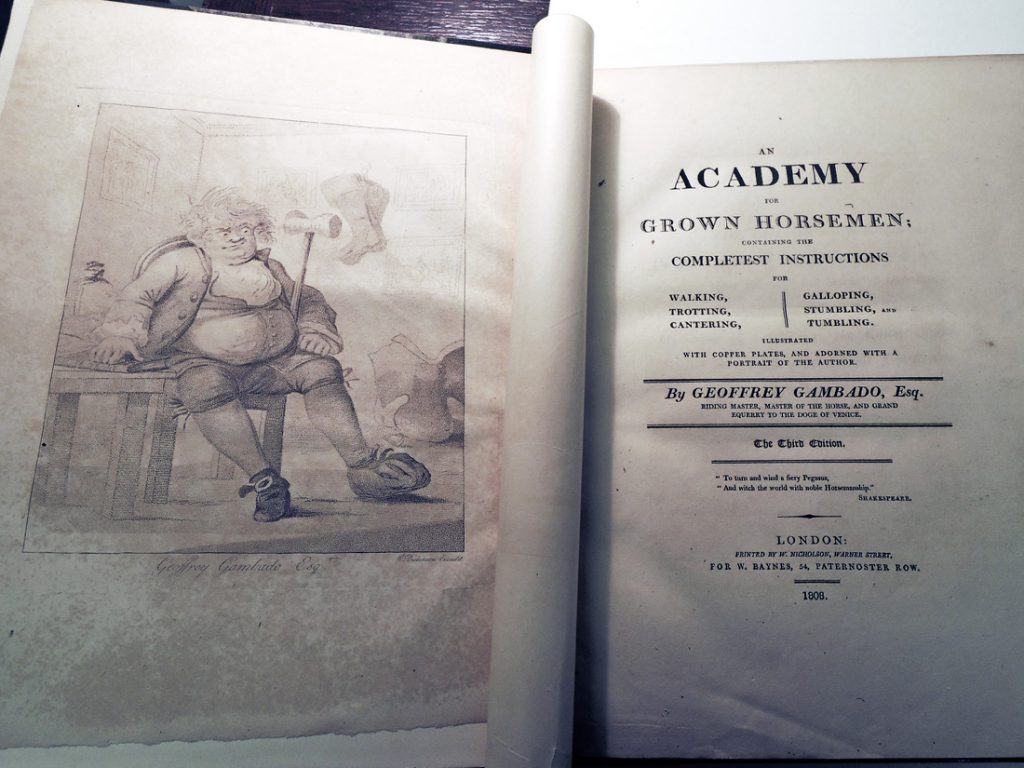 Henry William Bunbury (1750-1811). An Academy for Grown Horsemen; containing the completest instructions for walking, trotting, cantering, galloping, stumbling, and tumbling … By Geoffrey Gambado [pseud.] ... 3d ed. … (London, W. Baynes, 1808). xxiv, 36 p. front., plates. 33 cm. Graphic Arts Collection (GA) Oversize Rowlandson 1787.31f
Henry William Bunbury (1750-1811). An Academy for Grown Horsemen; containing the completest instructions for walking, trotting, cantering, galloping, stumbling, and tumbling … By Geoffrey Gambado [pseud.] ... 3d ed. … (London, W. Baynes, 1808). xxiv, 36 p. front., plates. 33 cm. Graphic Arts Collection (GA) Oversize Rowlandson 1787.31f
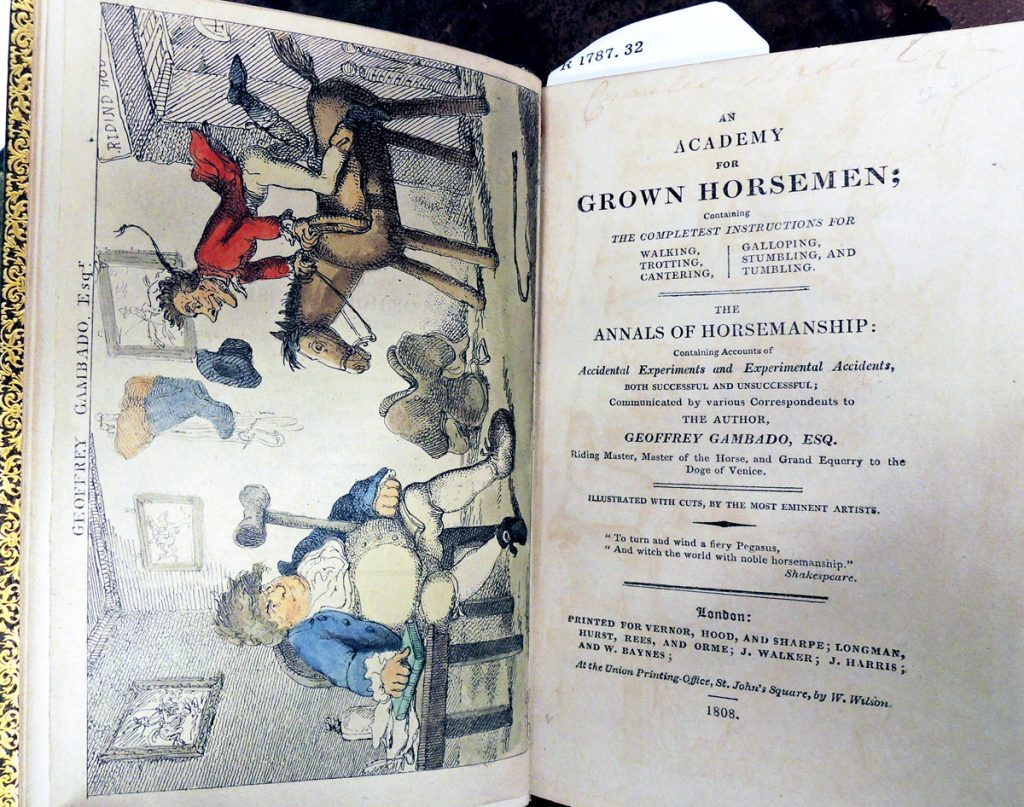 Henry William Bunbury (1750-1811), An Academy for Grown Horsemen; containing the completest instructions for walking, trotting, cantering, galloping, stumbling and tumbling. : The annals of horsemanship: containing accounts of accidental experiments and experimental accidents, both successful and unsuccessful; communicated by various correspondents to the author, Geoffrey Gambado, Esq. … Illustrated with cuts, by the most eminent artists (London: Printed for Vernor, Hood, and Sharpe; Longman, Hurst, Rees, and Orme; J. Walker; J. Harris; and W. Bayne; at the union printing-office, … by W. Wilson., 1808). Graphic Arts Collection (GA) Rowlandson 1787.32
Henry William Bunbury (1750-1811), An Academy for Grown Horsemen; containing the completest instructions for walking, trotting, cantering, galloping, stumbling and tumbling. : The annals of horsemanship: containing accounts of accidental experiments and experimental accidents, both successful and unsuccessful; communicated by various correspondents to the author, Geoffrey Gambado, Esq. … Illustrated with cuts, by the most eminent artists (London: Printed for Vernor, Hood, and Sharpe; Longman, Hurst, Rees, and Orme; J. Walker; J. Harris; and W. Bayne; at the union printing-office, … by W. Wilson., 1808). Graphic Arts Collection (GA) Rowlandson 1787.32
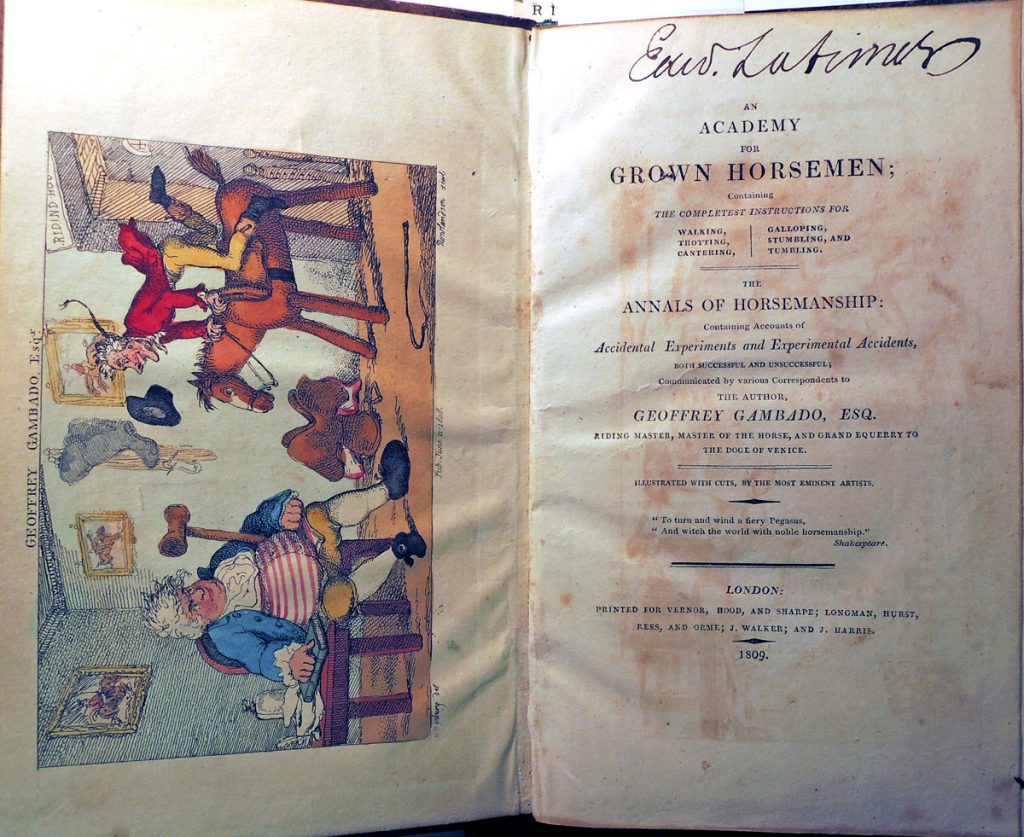 Henry William Bunbury (1750-1811), An Academy for Grown Horsemen; containing the completest instructions for walking, trotting … The annals of horsemanship, containing accounts of accidental experiments … communicated … to the author Geoffrey Gambado, esq.Illustrated with cuts, by the most eminent artists (London: Printed for Vernor, Hood, and Shape [etc,], 1809). 140 p. col. illus. 22 cm. Graphic Arts Collection (GA) Rowlandson 1787.34 and Graphic Arts Collection (GA) Rowlandson 1787.34 and Rare Books: Laurence Roberts Carton Hunting Coll. (ExCarton) SF301 .xB93 1809
Henry William Bunbury (1750-1811), An Academy for Grown Horsemen; containing the completest instructions for walking, trotting … The annals of horsemanship, containing accounts of accidental experiments … communicated … to the author Geoffrey Gambado, esq.Illustrated with cuts, by the most eminent artists (London: Printed for Vernor, Hood, and Shape [etc,], 1809). 140 p. col. illus. 22 cm. Graphic Arts Collection (GA) Rowlandson 1787.34 and Graphic Arts Collection (GA) Rowlandson 1787.34 and Rare Books: Laurence Roberts Carton Hunting Coll. (ExCarton) SF301 .xB93 1809
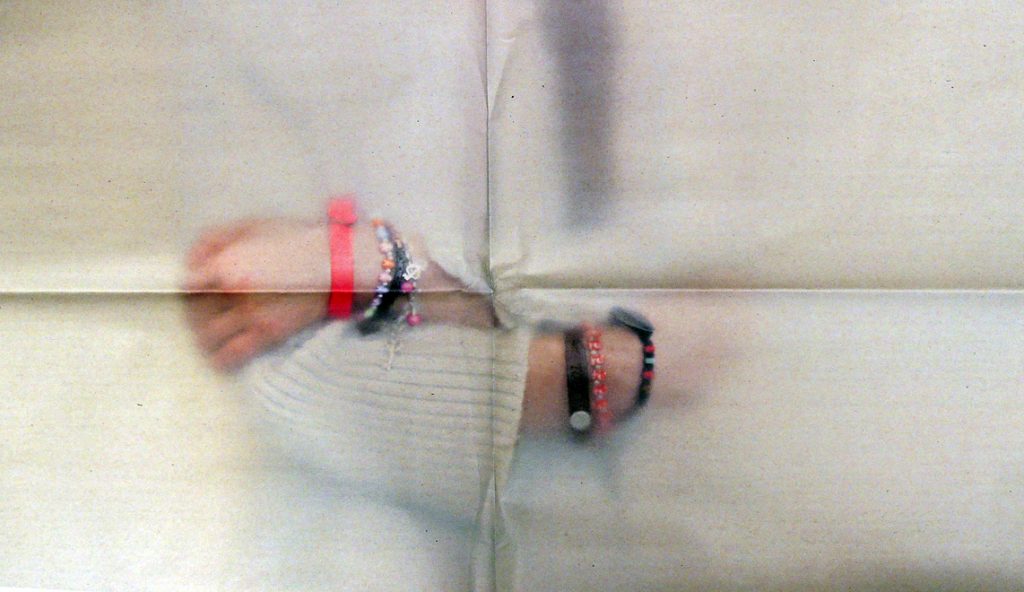 https://www.hamilton-landmarks.org/
https://www.hamilton-landmarks.org/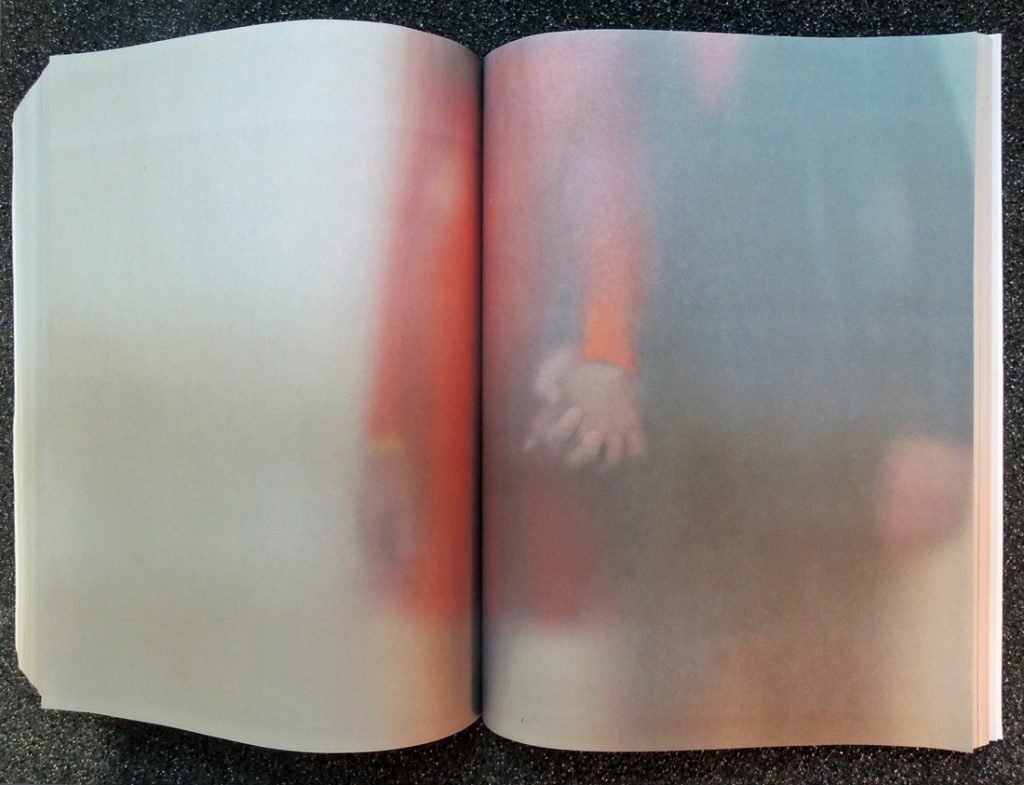 “ONEEVERYONE, a public art project by Ann Hamilton, is framed by the recognition that human touch is the most essential means of contact and a fundamental expression of physical care. Commissioned by Landmarks for the Dell Medical School, ONEEVERYONE begins with a series of more than 500 portraits of Austin community members, photographed through a semi-transparent membrane that focuses each point where the body make contact. These images are presented in multiple forms, including porcelain enamel architectural panels; a newsprint publication with commissioned essays responding to the project; public forums; and an exhibition at the Visual Arts Center.”—Andrée Bober, Landmarks Director
“ONEEVERYONE, a public art project by Ann Hamilton, is framed by the recognition that human touch is the most essential means of contact and a fundamental expression of physical care. Commissioned by Landmarks for the Dell Medical School, ONEEVERYONE begins with a series of more than 500 portraits of Austin community members, photographed through a semi-transparent membrane that focuses each point where the body make contact. These images are presented in multiple forms, including porcelain enamel architectural panels; a newsprint publication with commissioned essays responding to the project; public forums; and an exhibition at the Visual Arts Center.”—Andrée Bober, Landmarks Director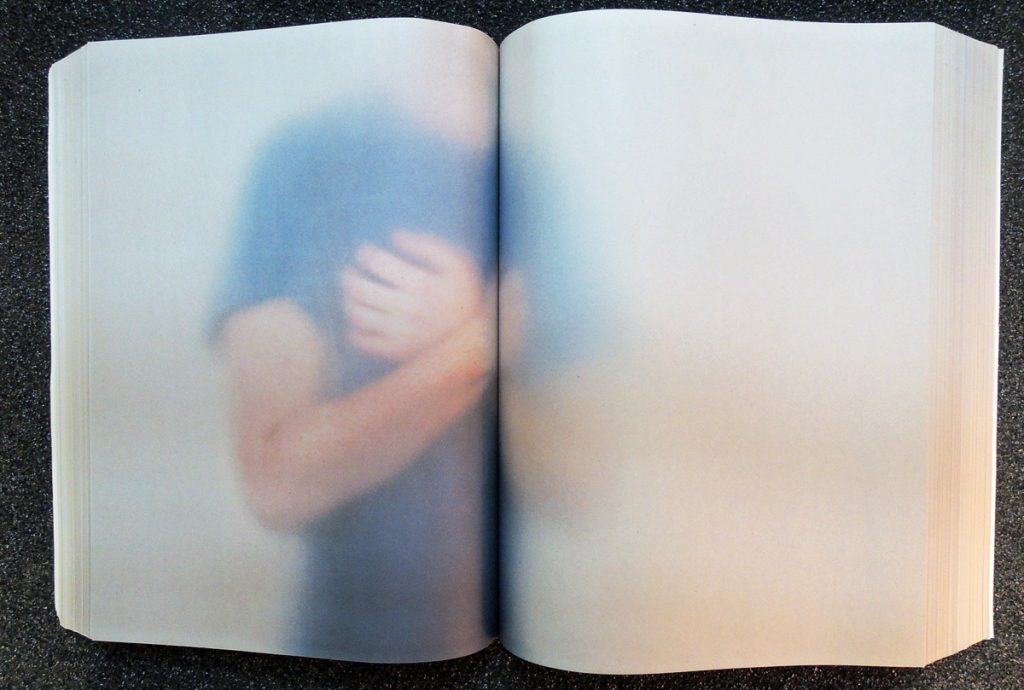 “This book presents yet another form for the portraits. Its pages hold at least one image of each participant who volunteered their time and opened themselves to an exchange with the artist. Through the images touch–something we feel more than see–becomes visible.”
“This book presents yet another form for the portraits. Its pages hold at least one image of each participant who volunteered their time and opened themselves to an exchange with the artist. Through the images touch–something we feel more than see–becomes visible.”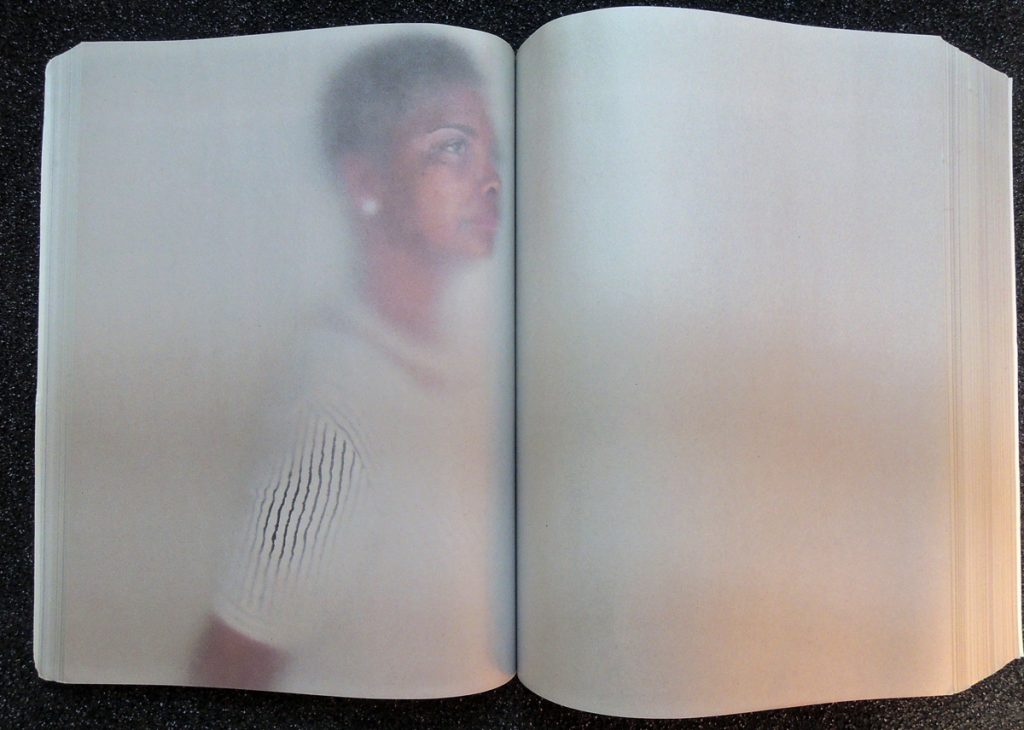 The Graphic Arts Collection is fortunate to have acquired this volume, along with the newspaper of commissioned essays, thanks to Landmarks, the public art program of The University of Texas at Austin. For more information on this extraordinary project, see https://www.hamilton-landmarks.org/
The Graphic Arts Collection is fortunate to have acquired this volume, along with the newspaper of commissioned essays, thanks to Landmarks, the public art program of The University of Texas at Austin. For more information on this extraordinary project, see https://www.hamilton-landmarks.org/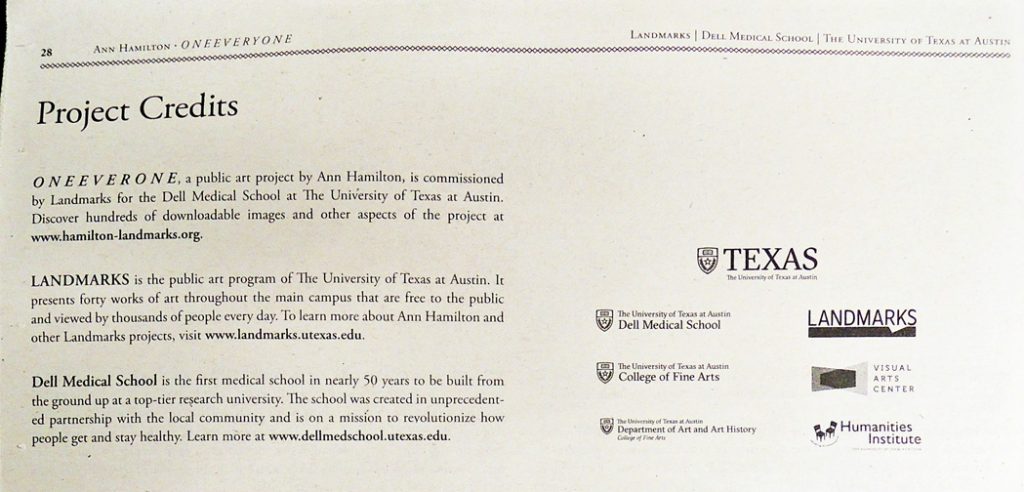 Ann Hamilton, ONEEVERYONE (Austin, Texas: Landmarks, University of Texas at Austin, 2017). 1 volume (unpaged): no text. Graphic Arts Collection GAX 2017- in process
Ann Hamilton, ONEEVERYONE (Austin, Texas: Landmarks, University of Texas at Austin, 2017). 1 volume (unpaged): no text. Graphic Arts Collection GAX 2017- in process
